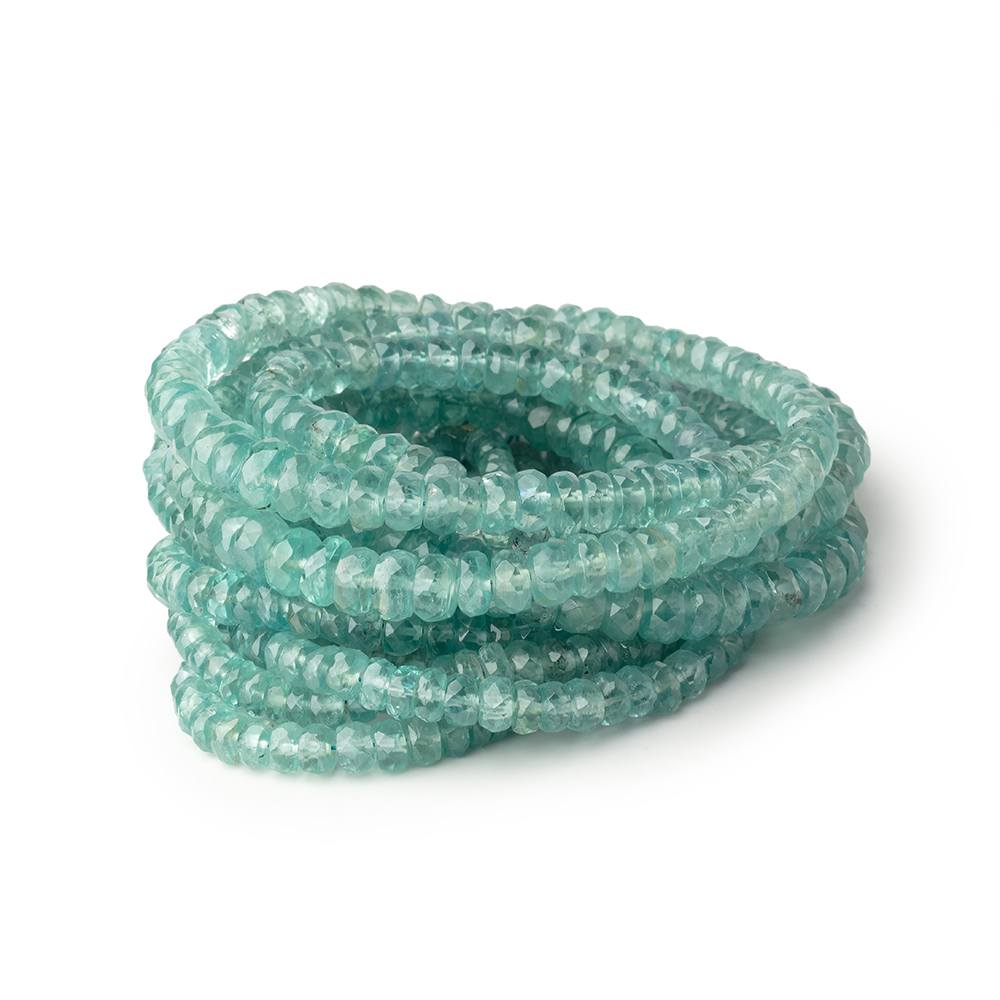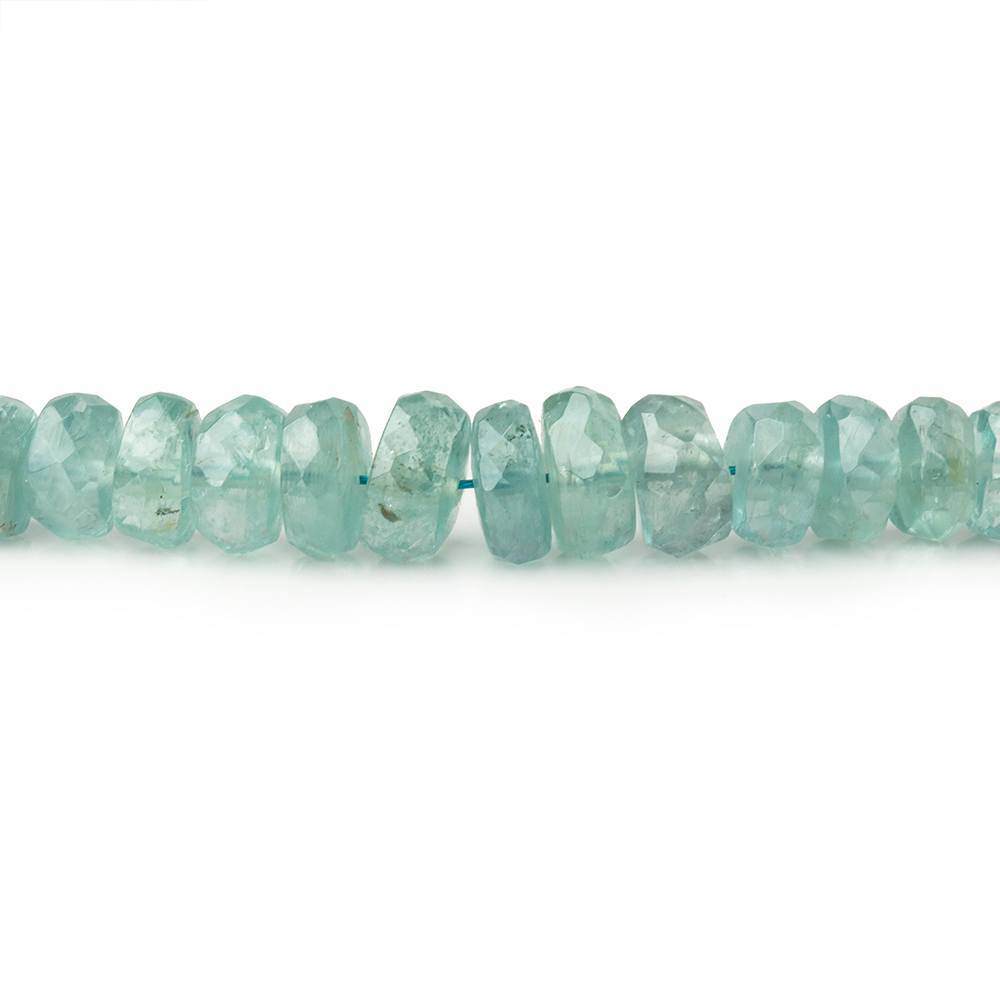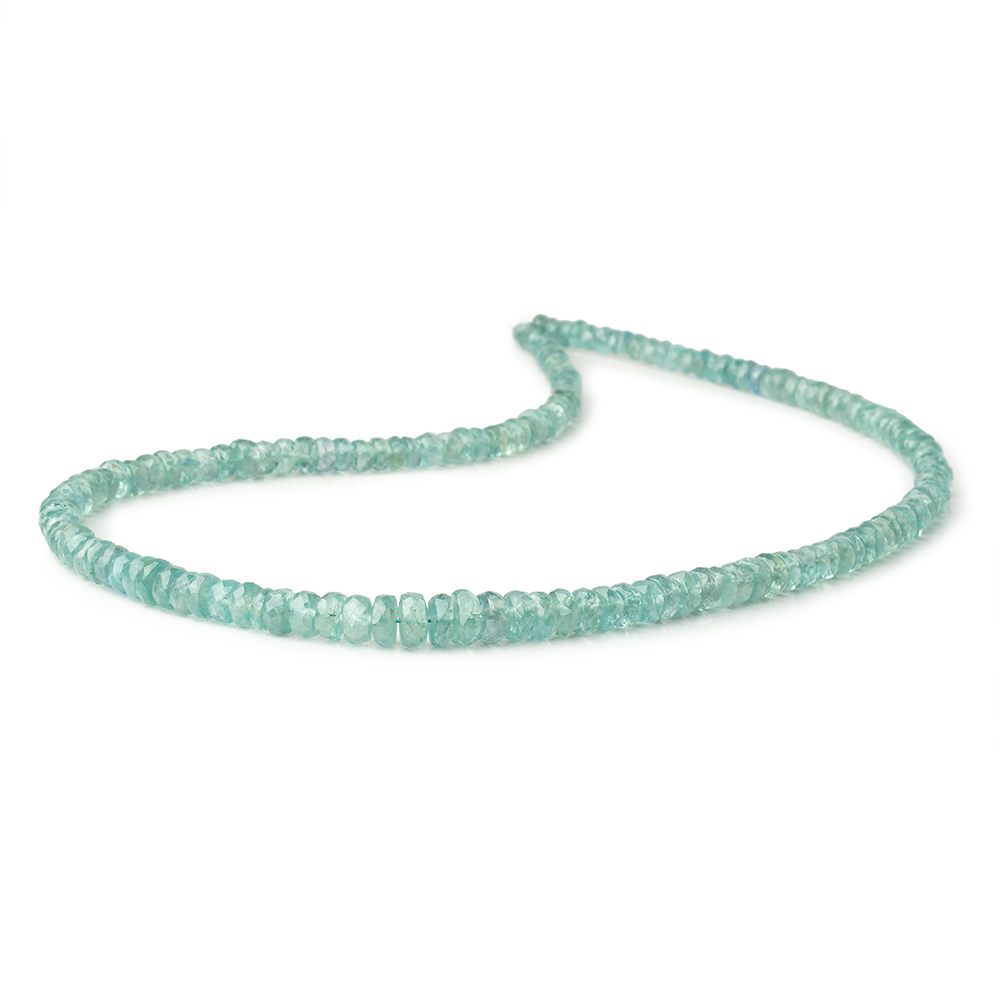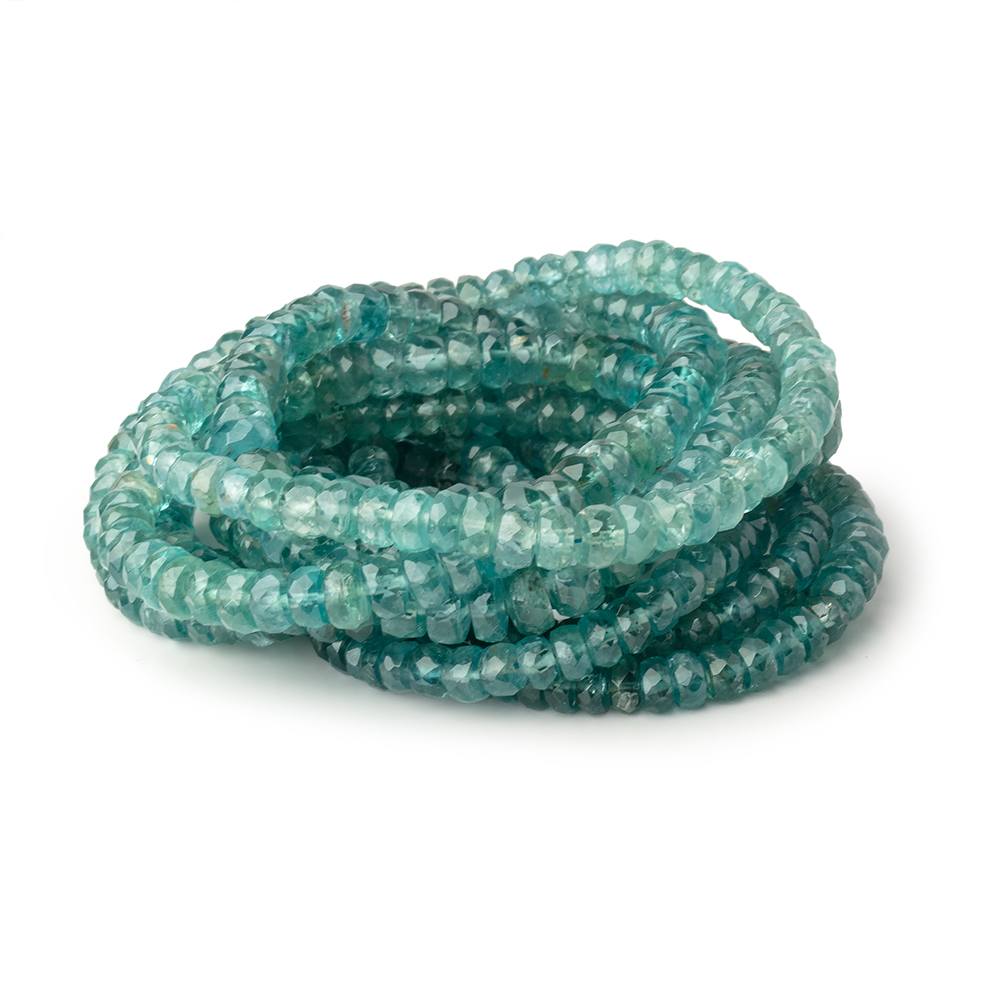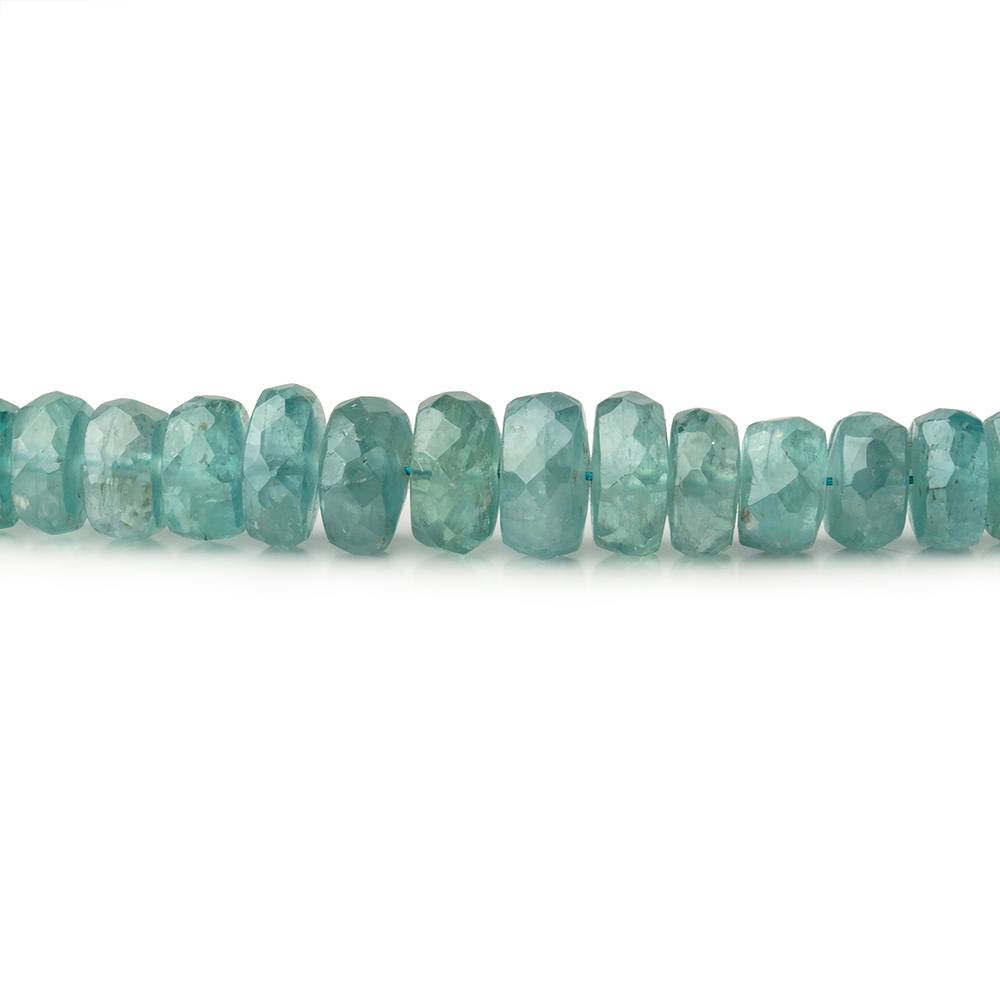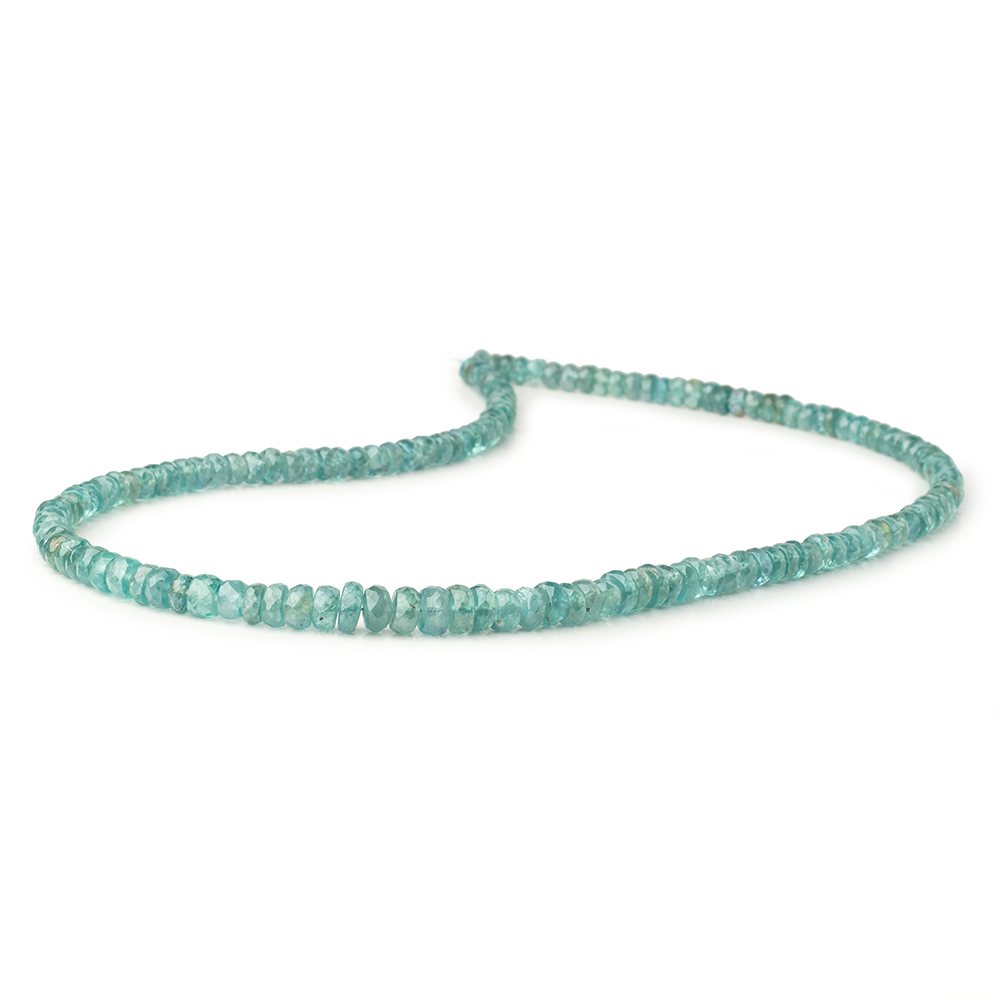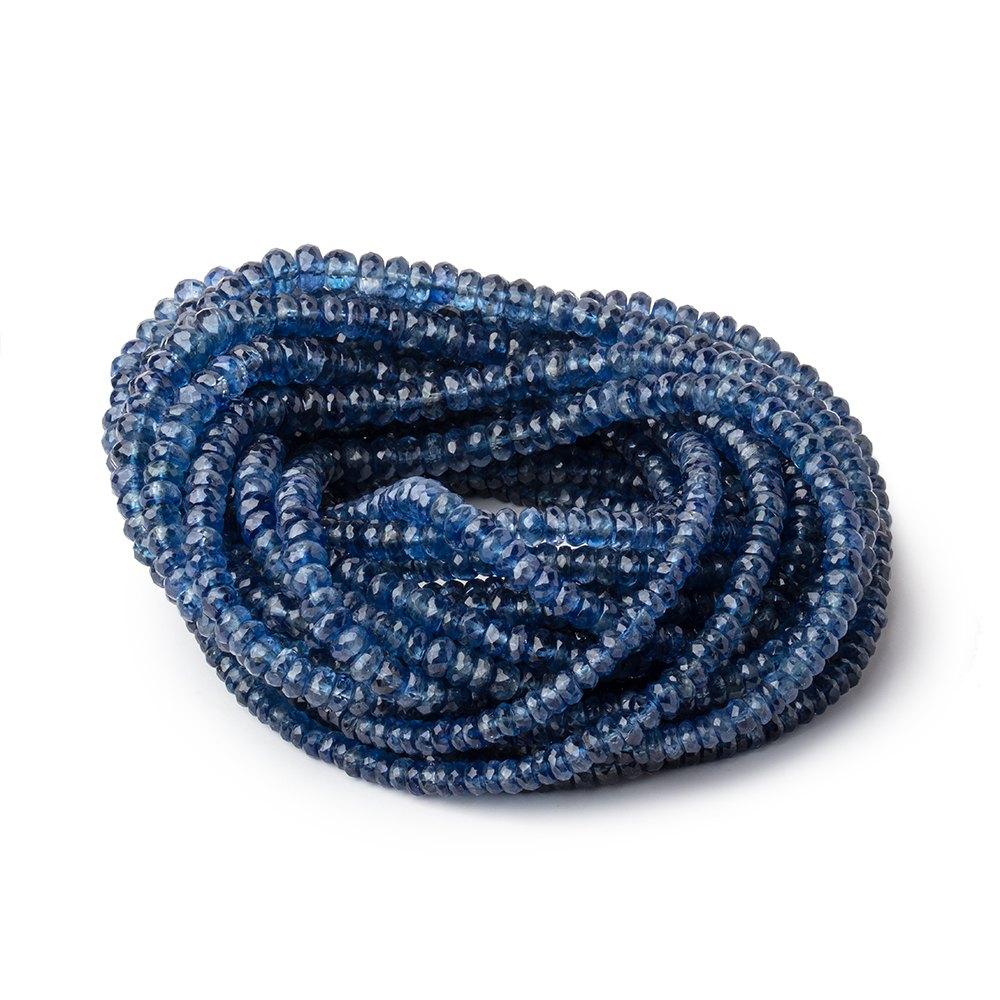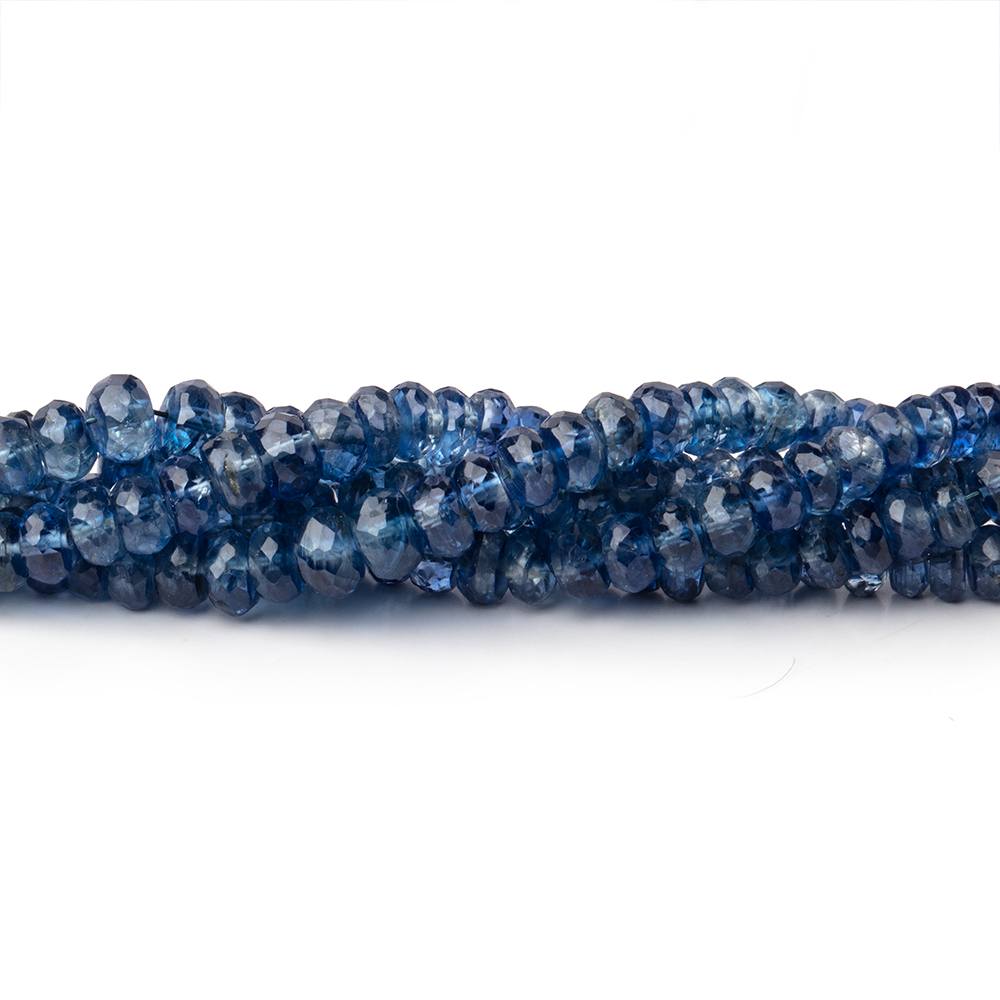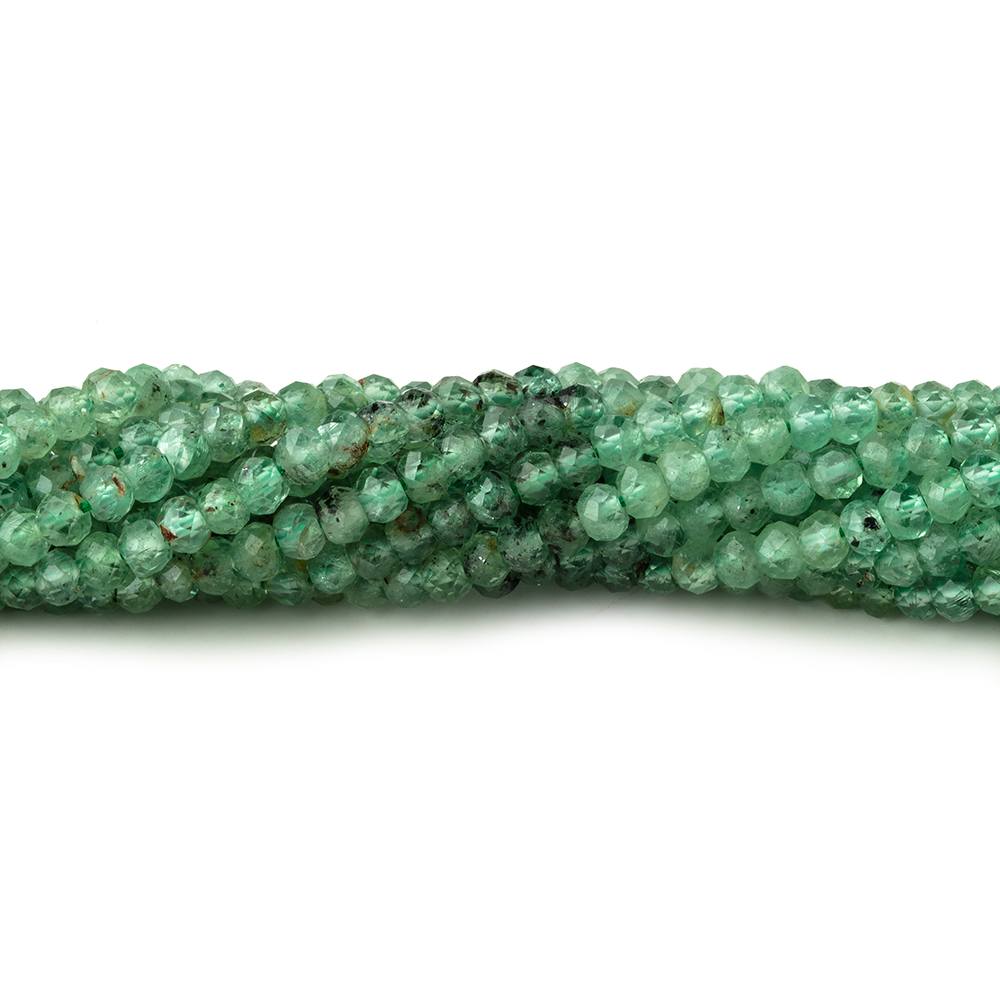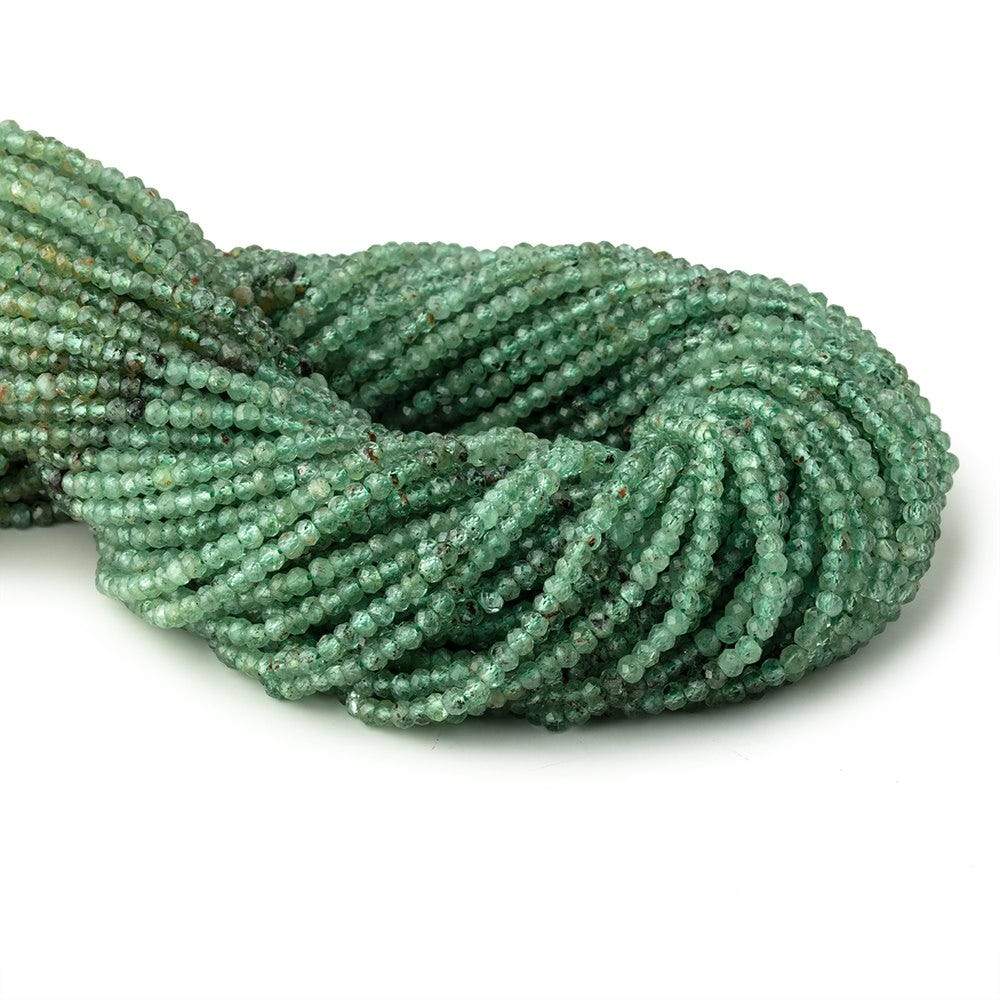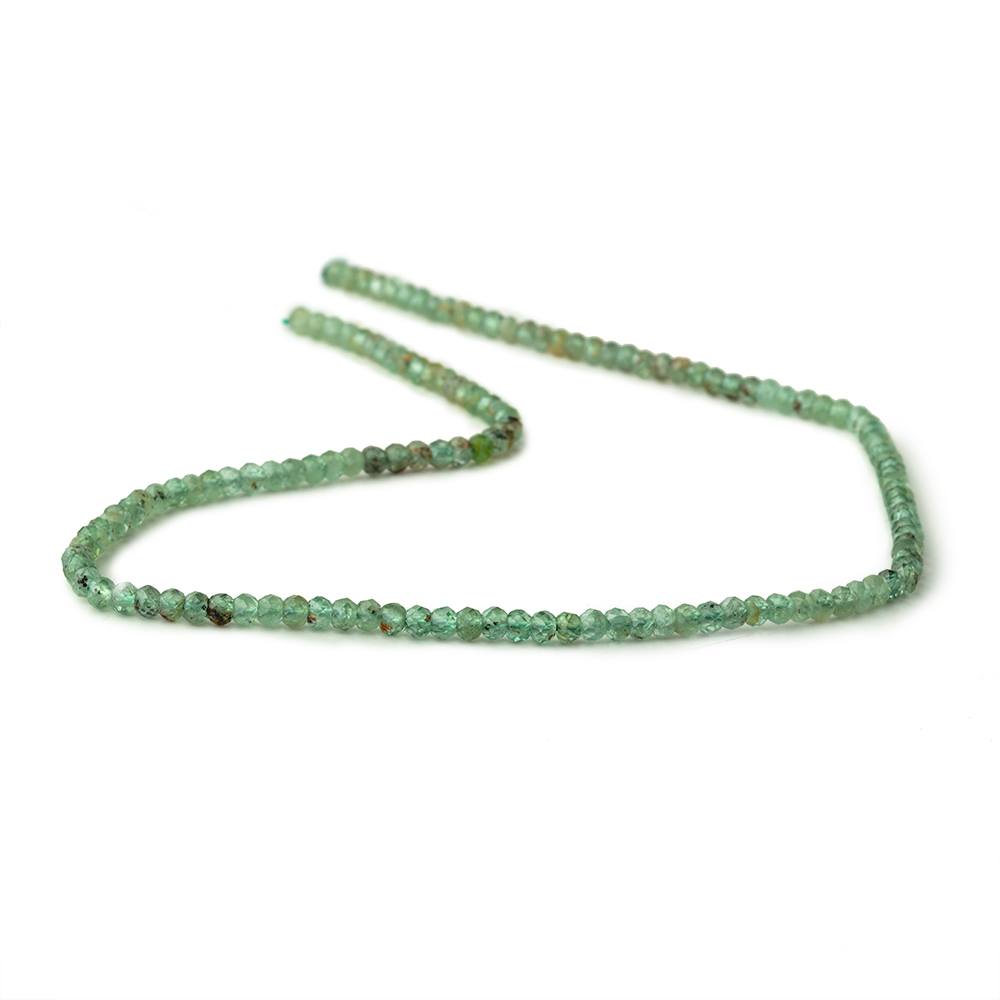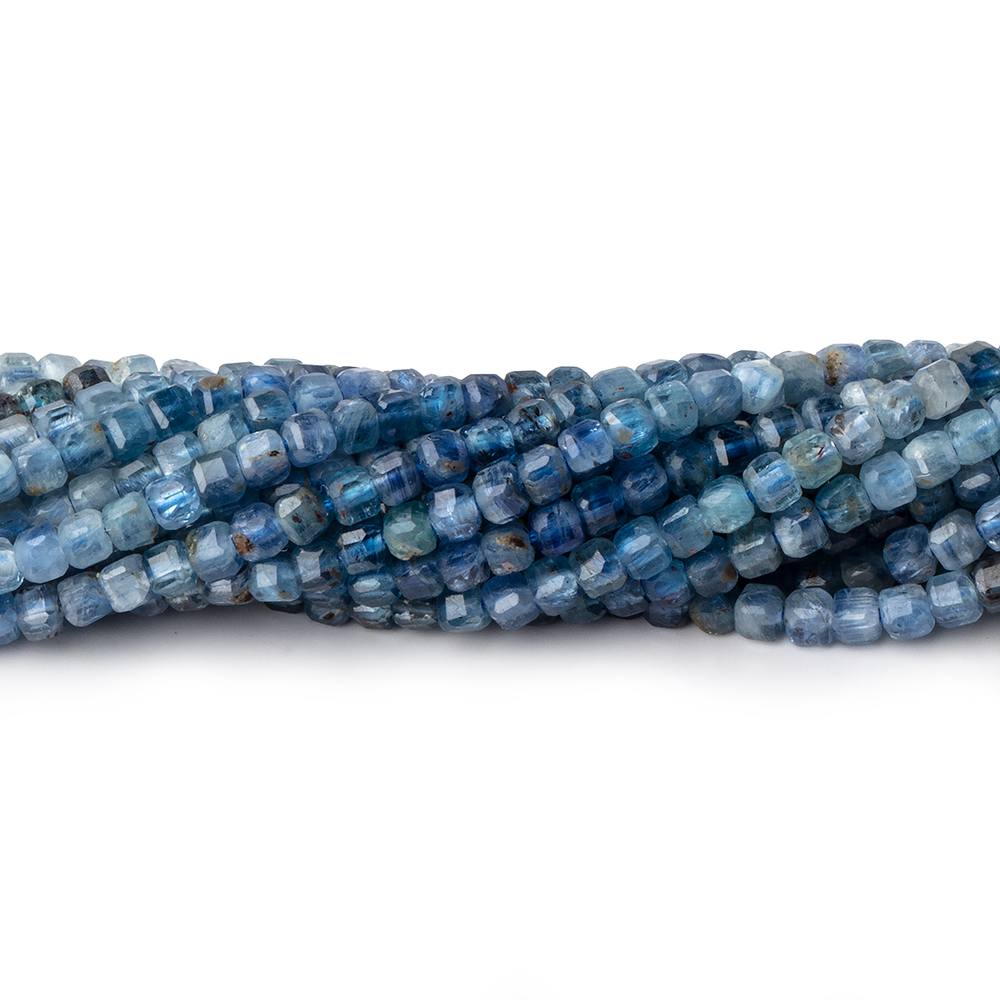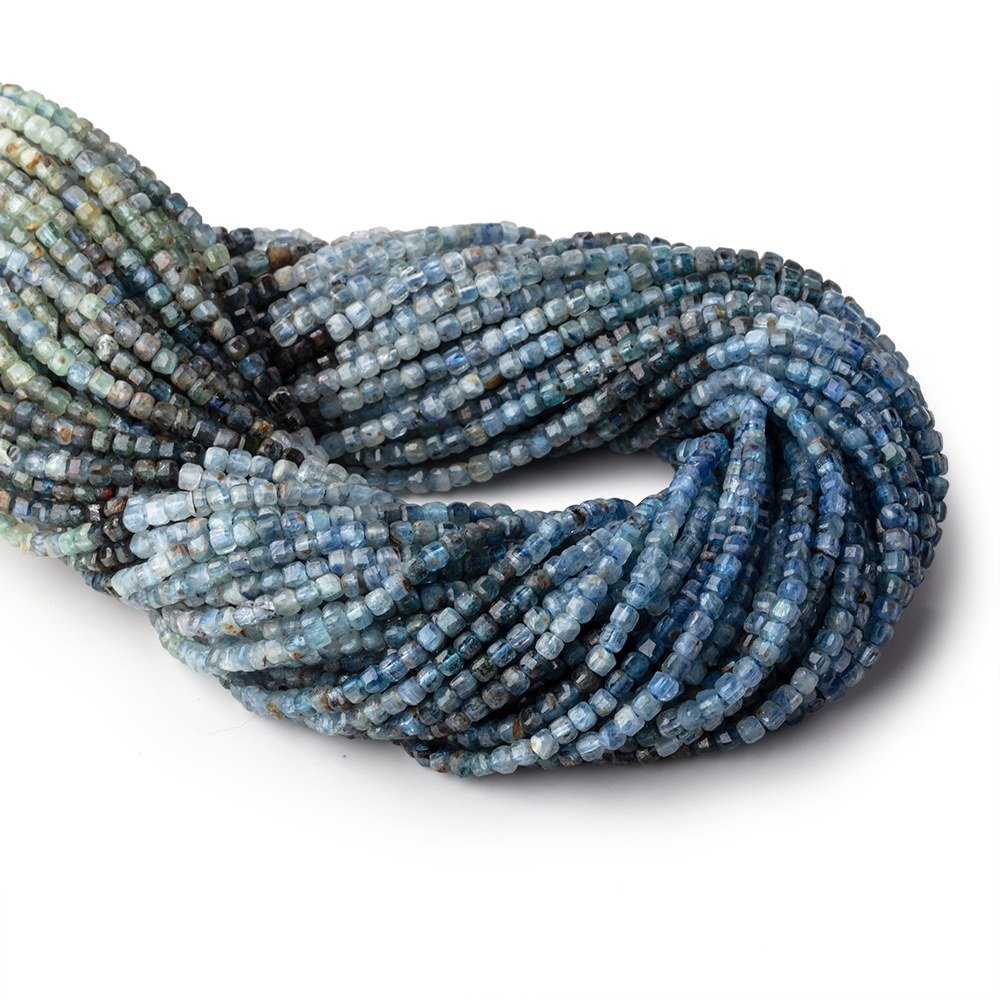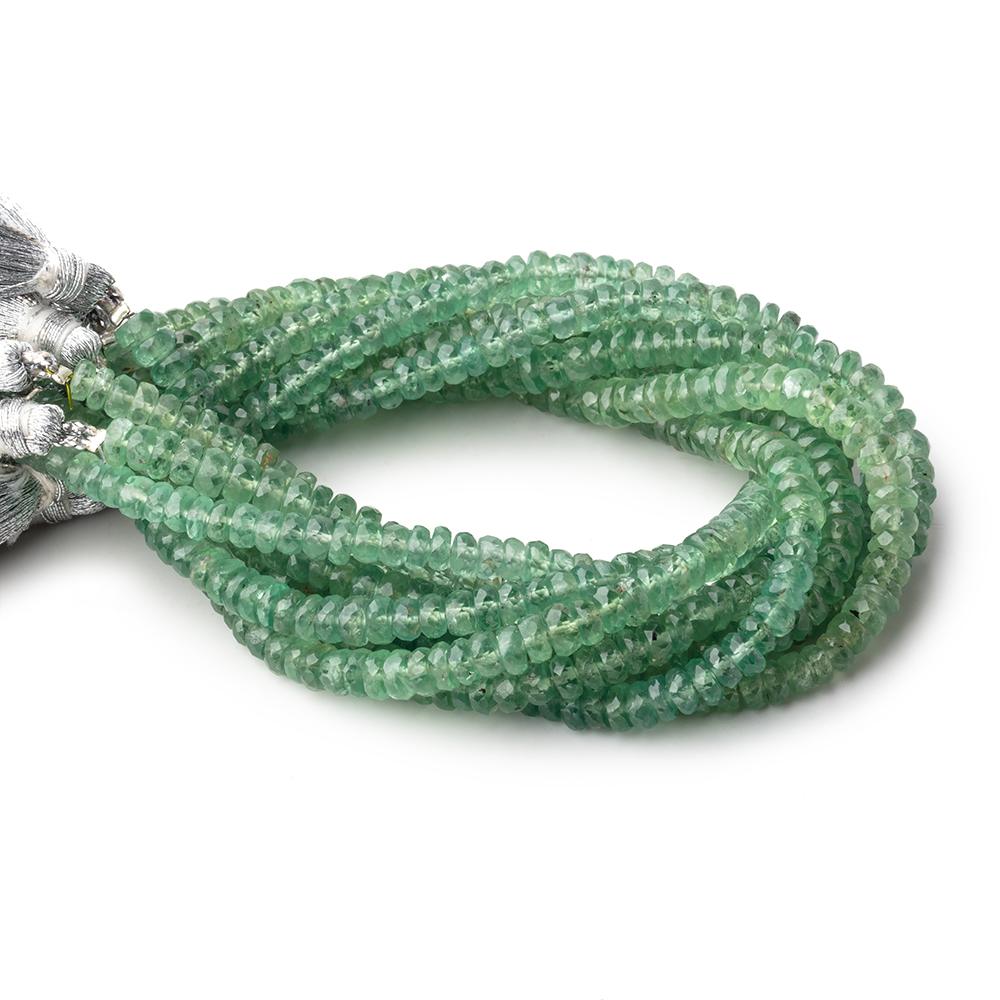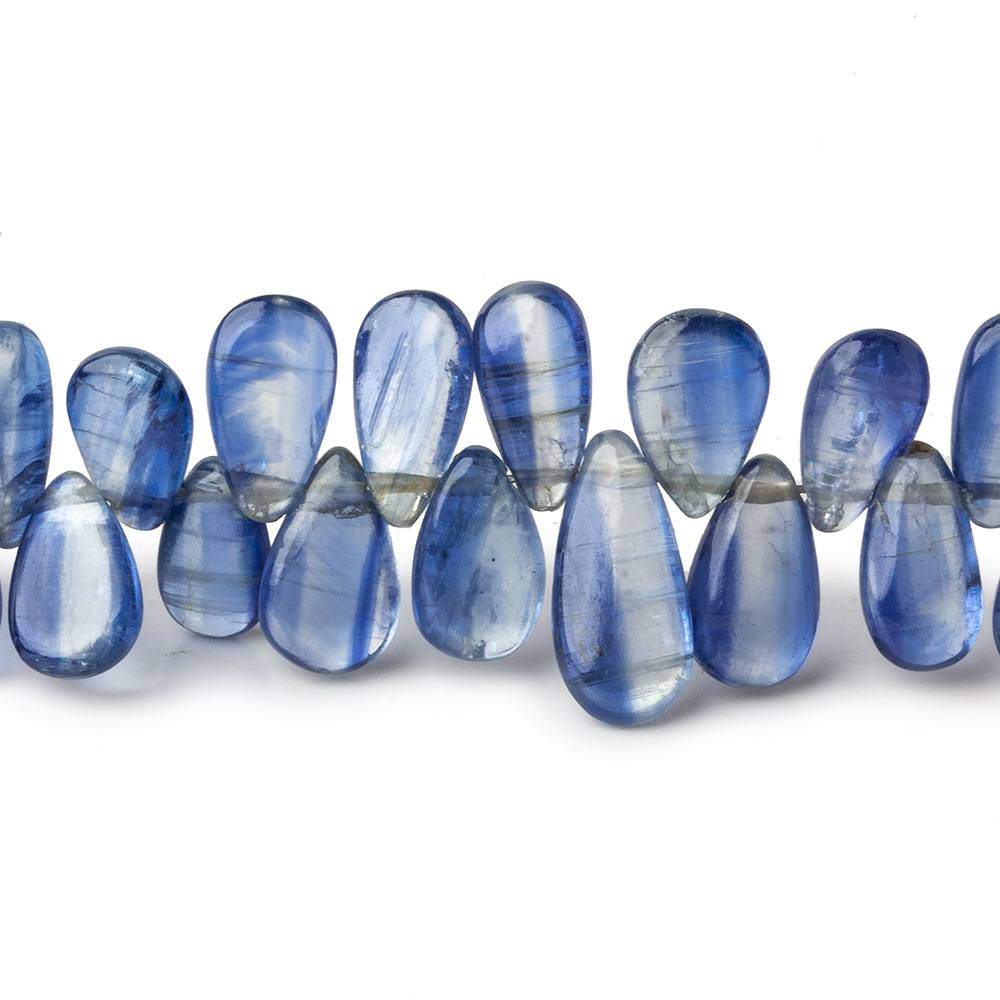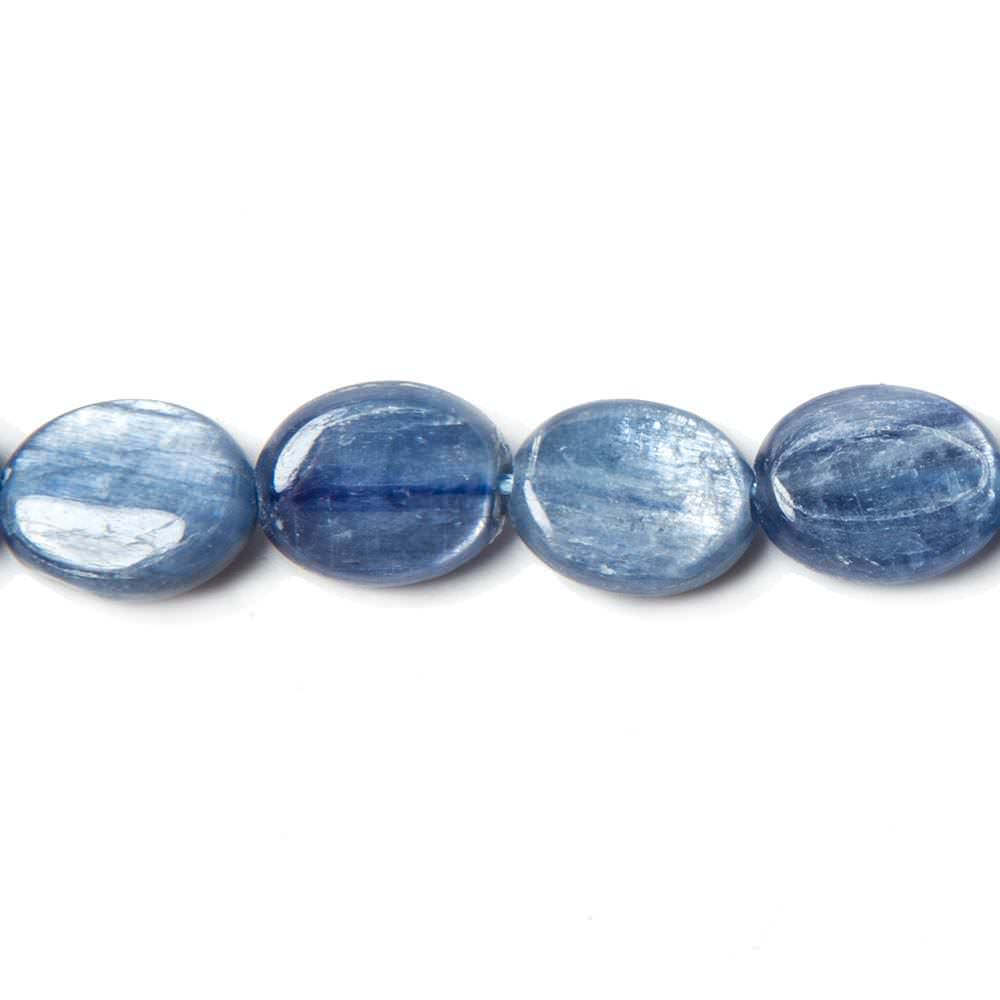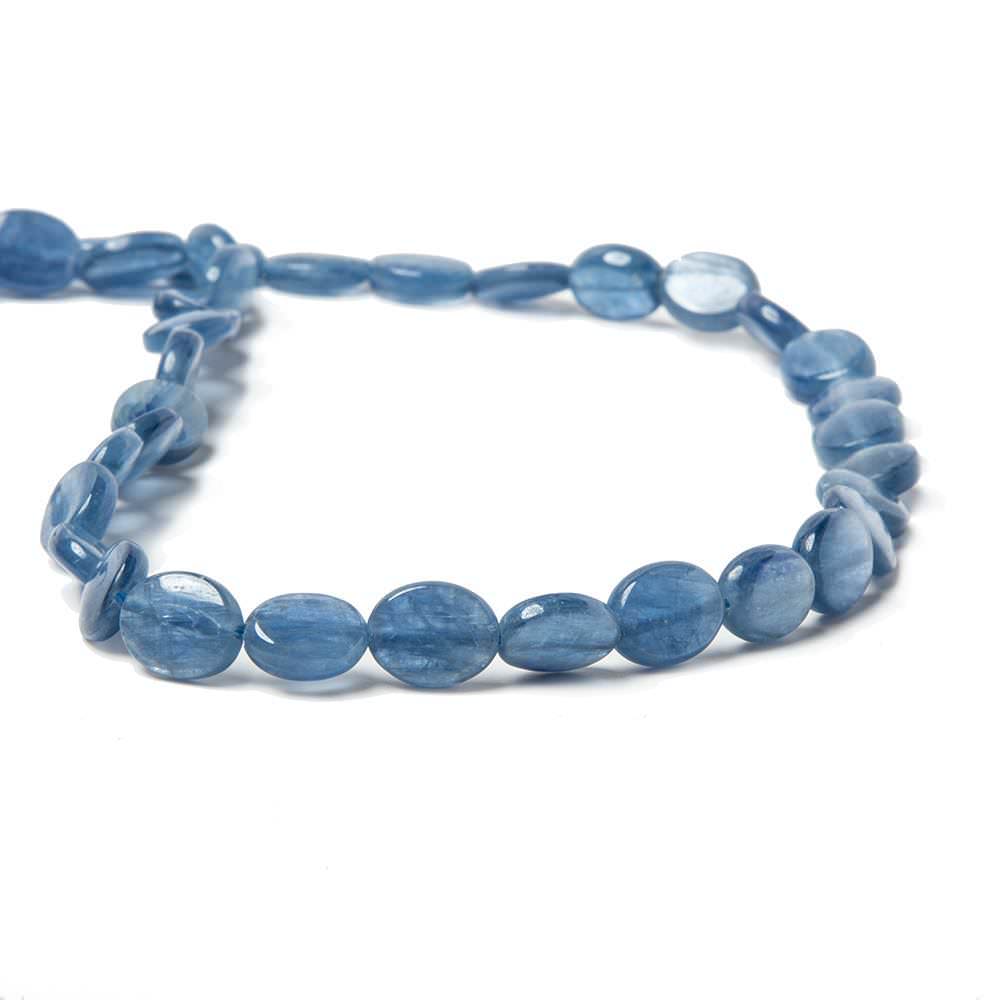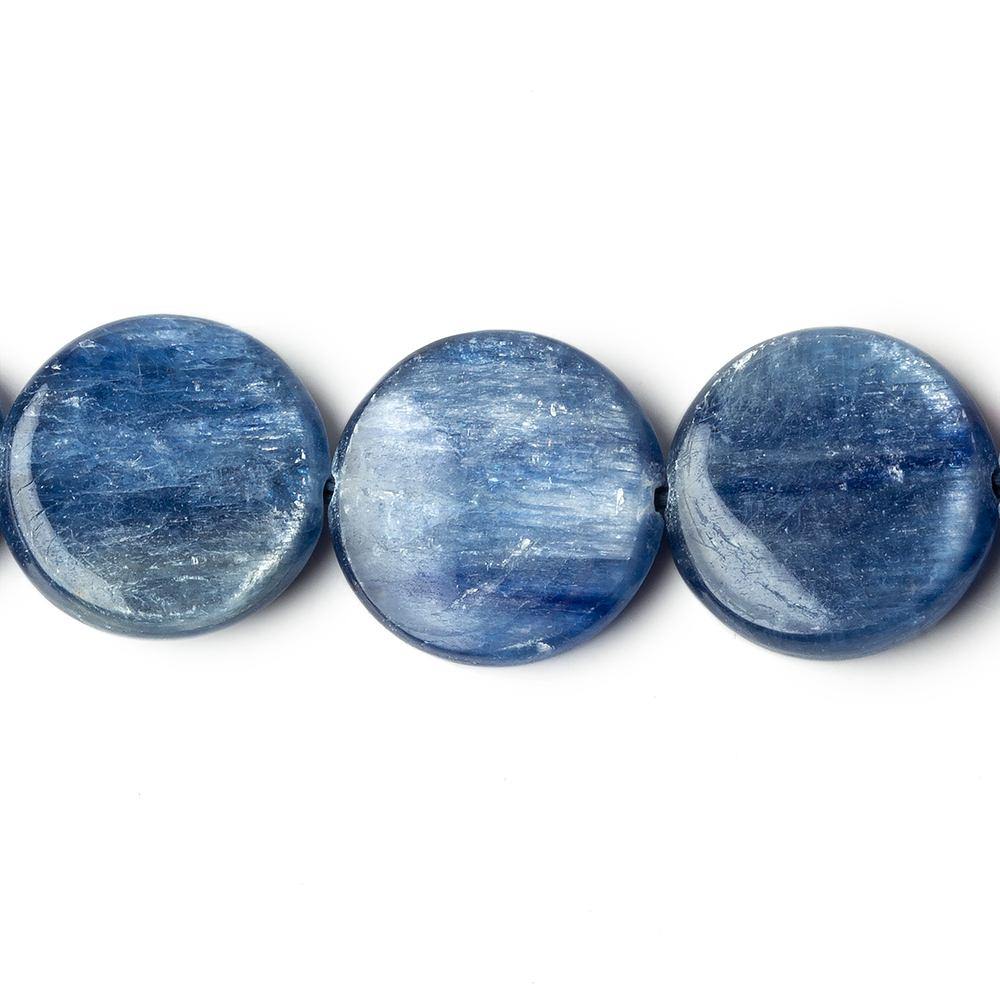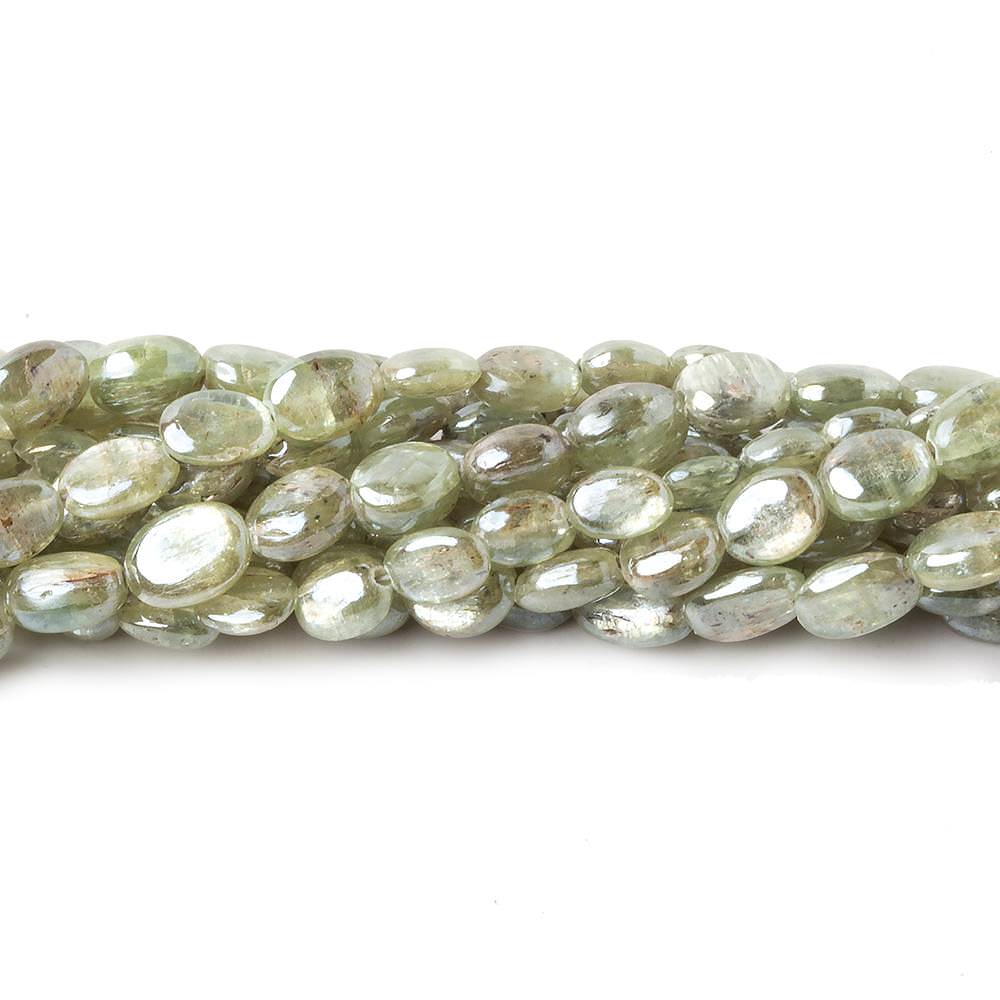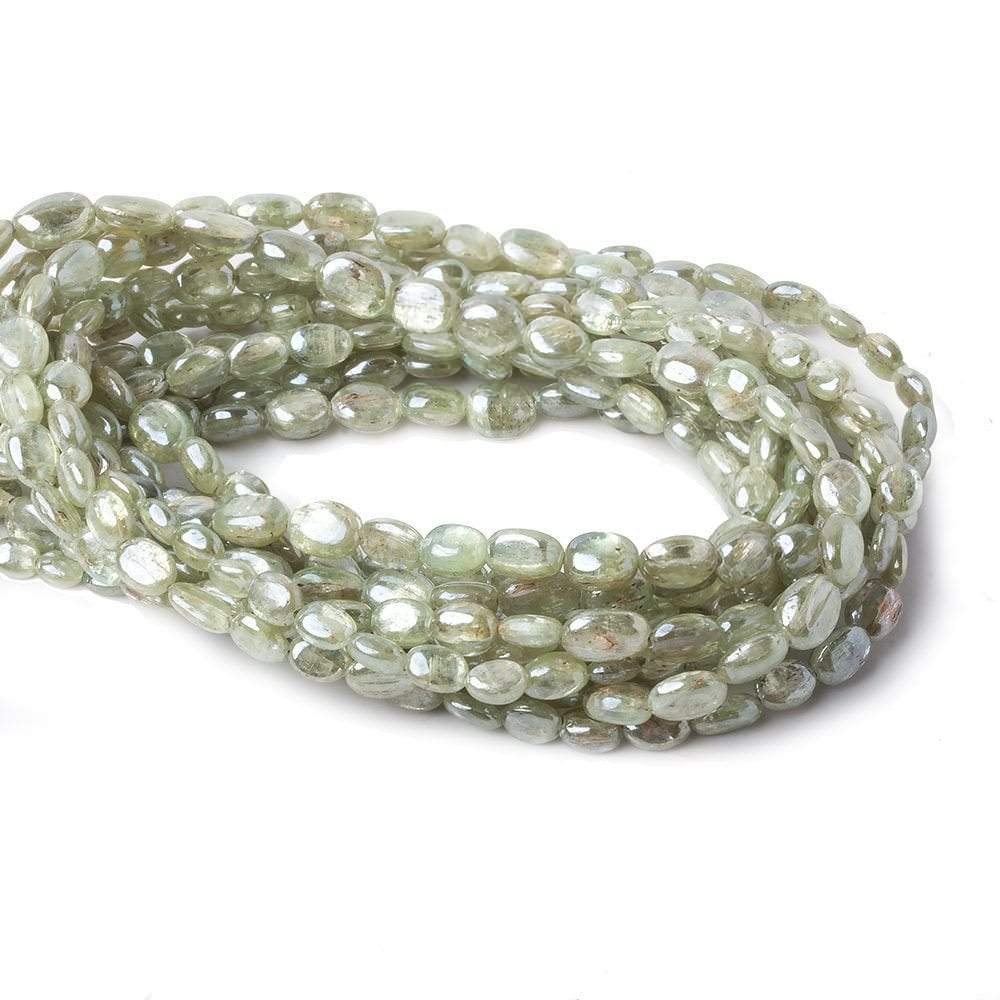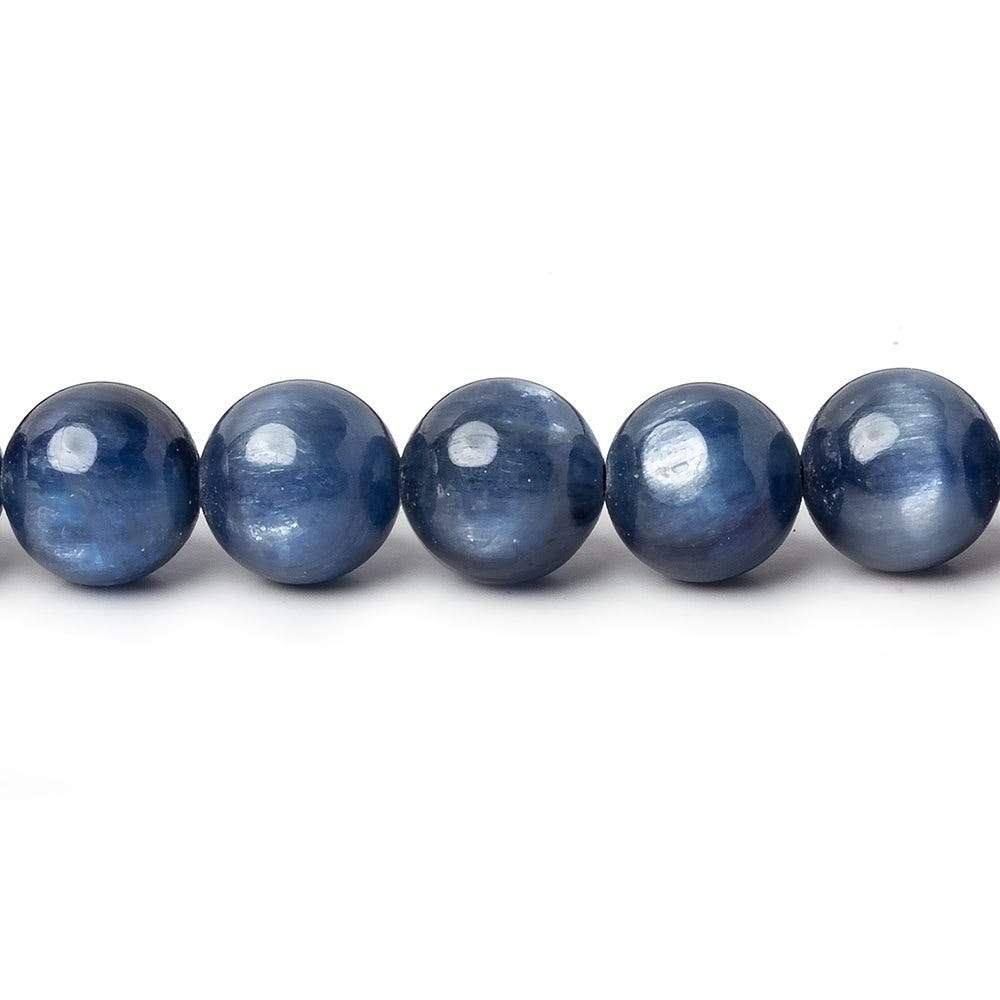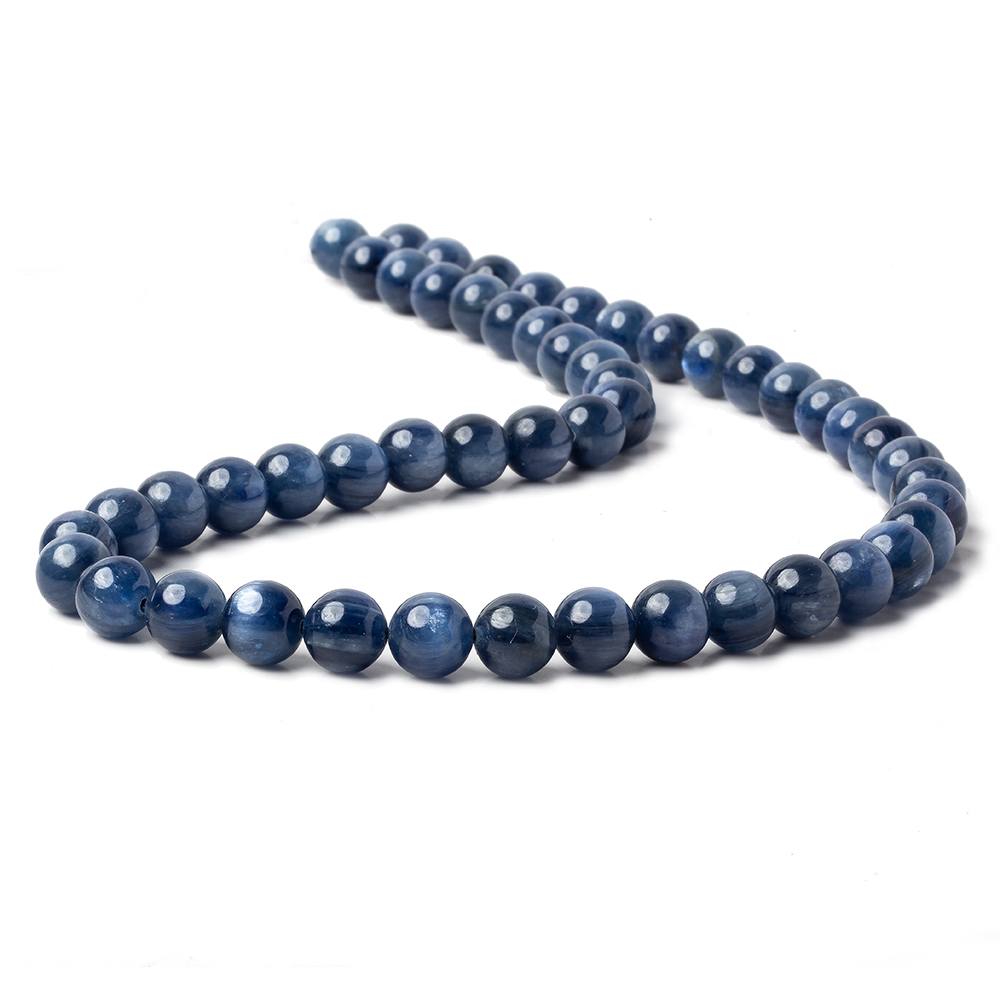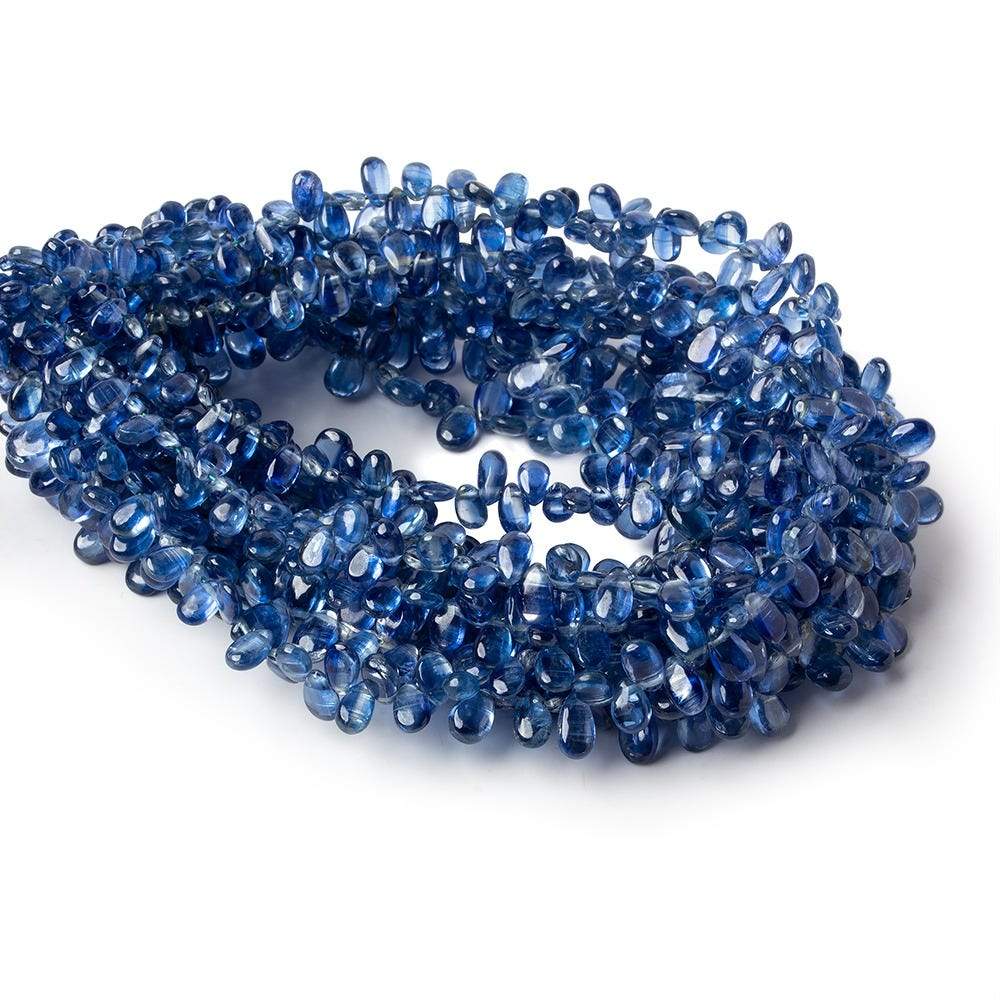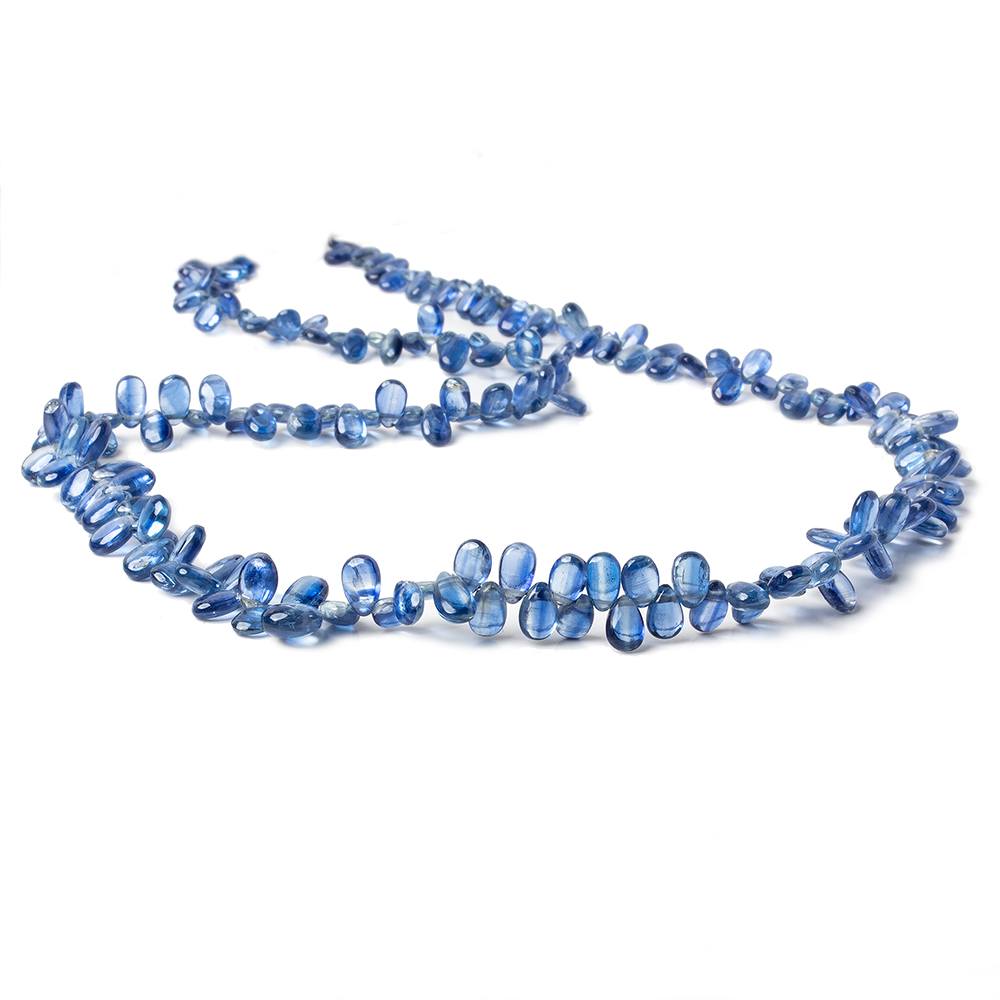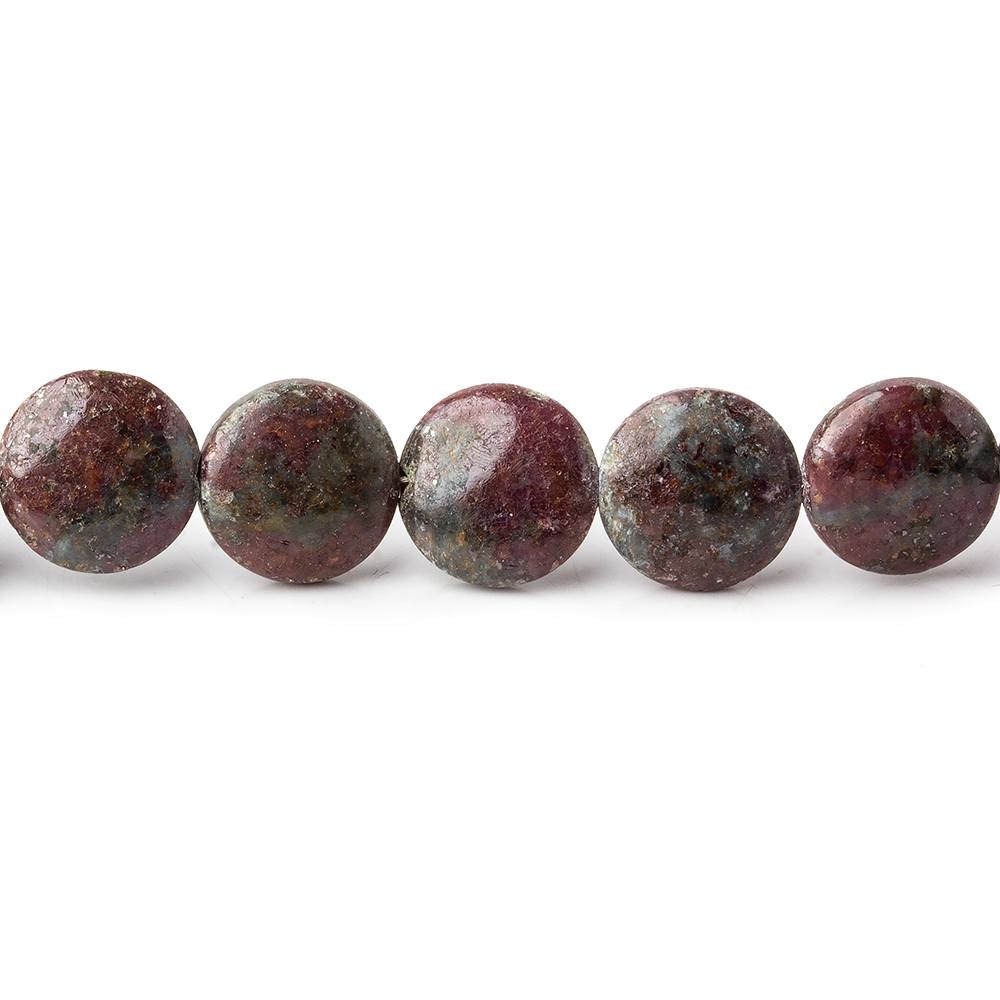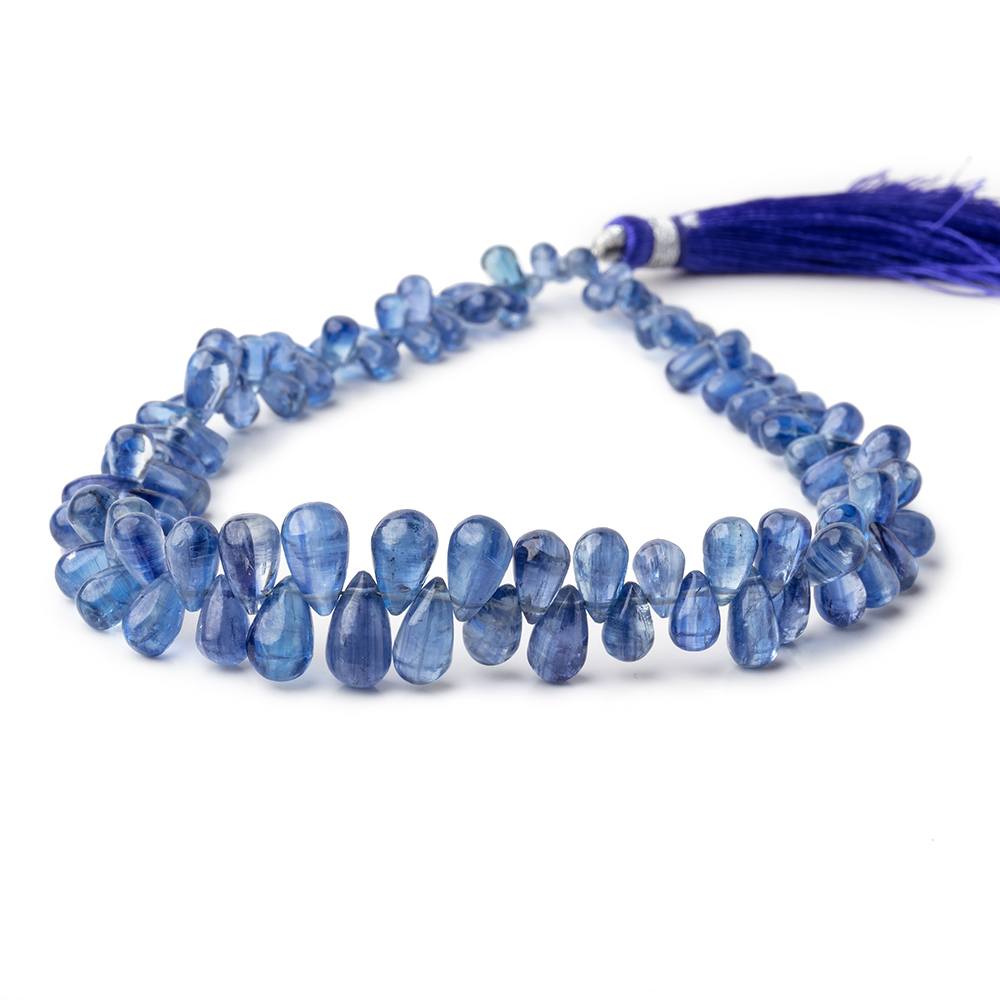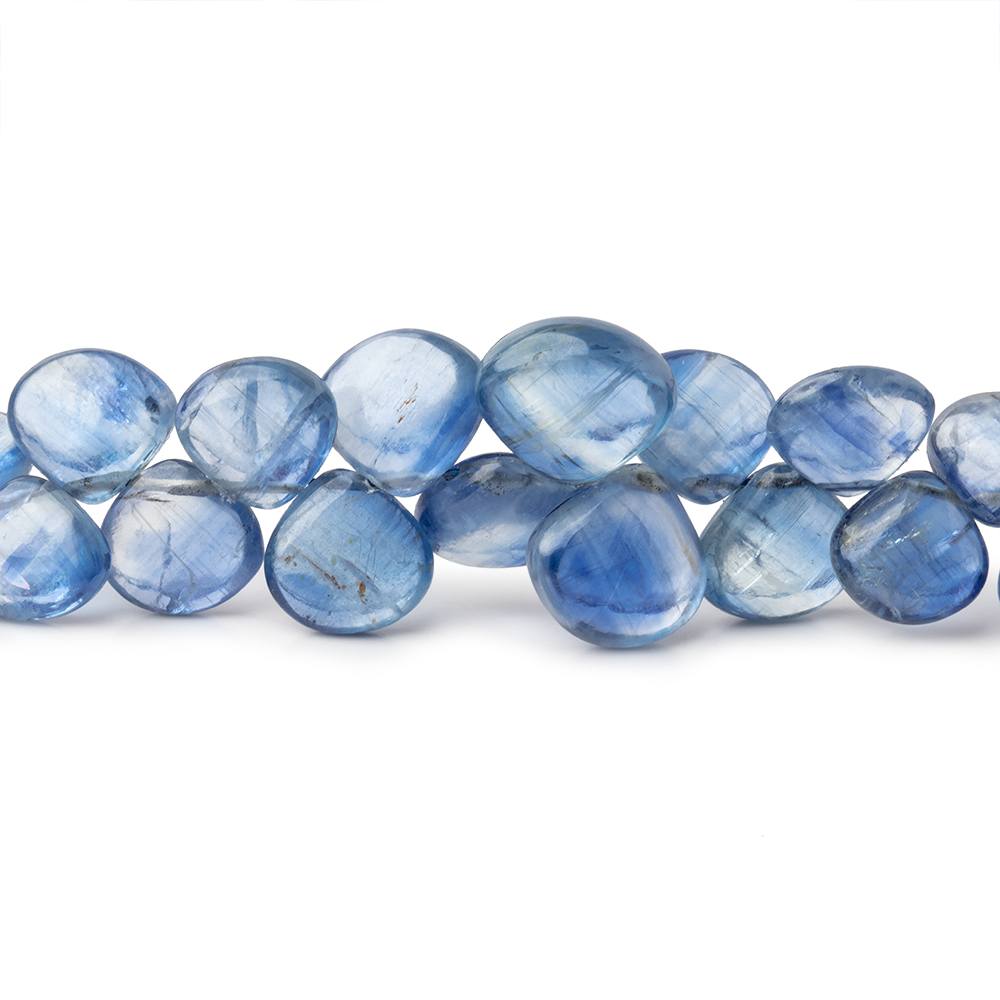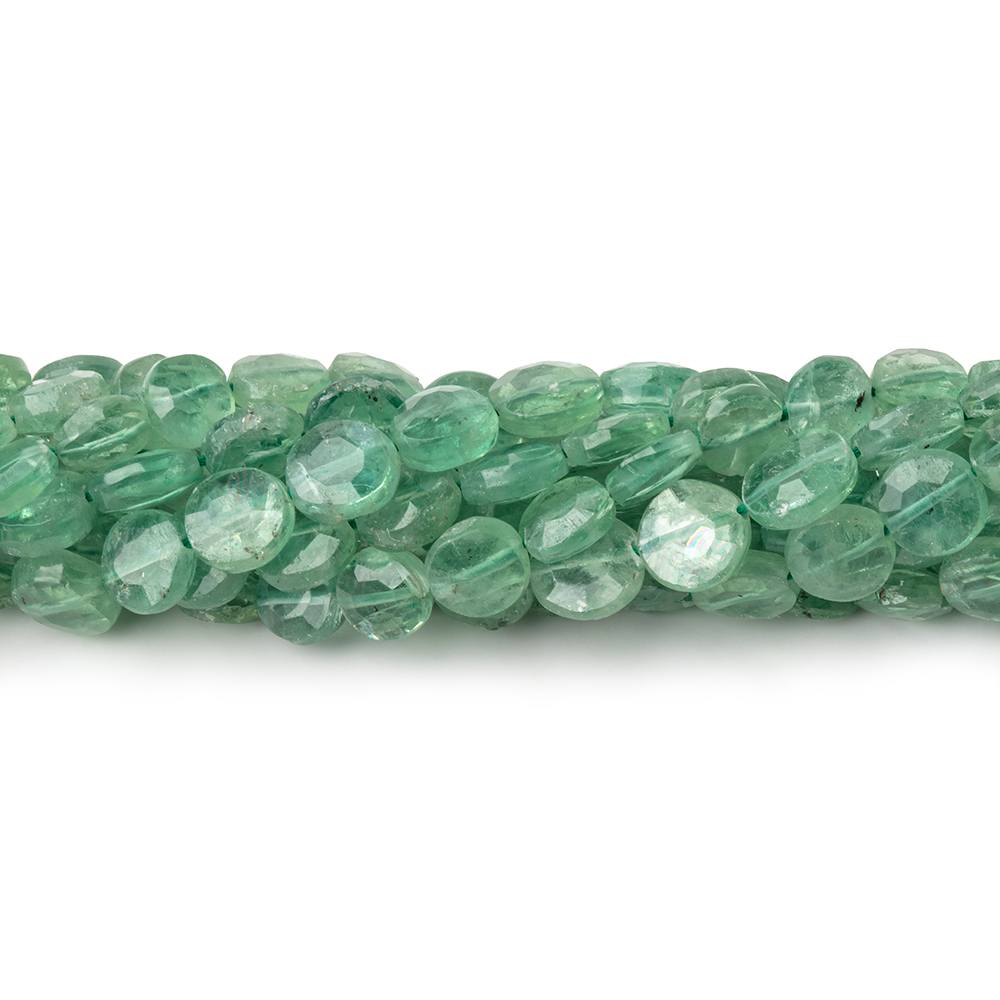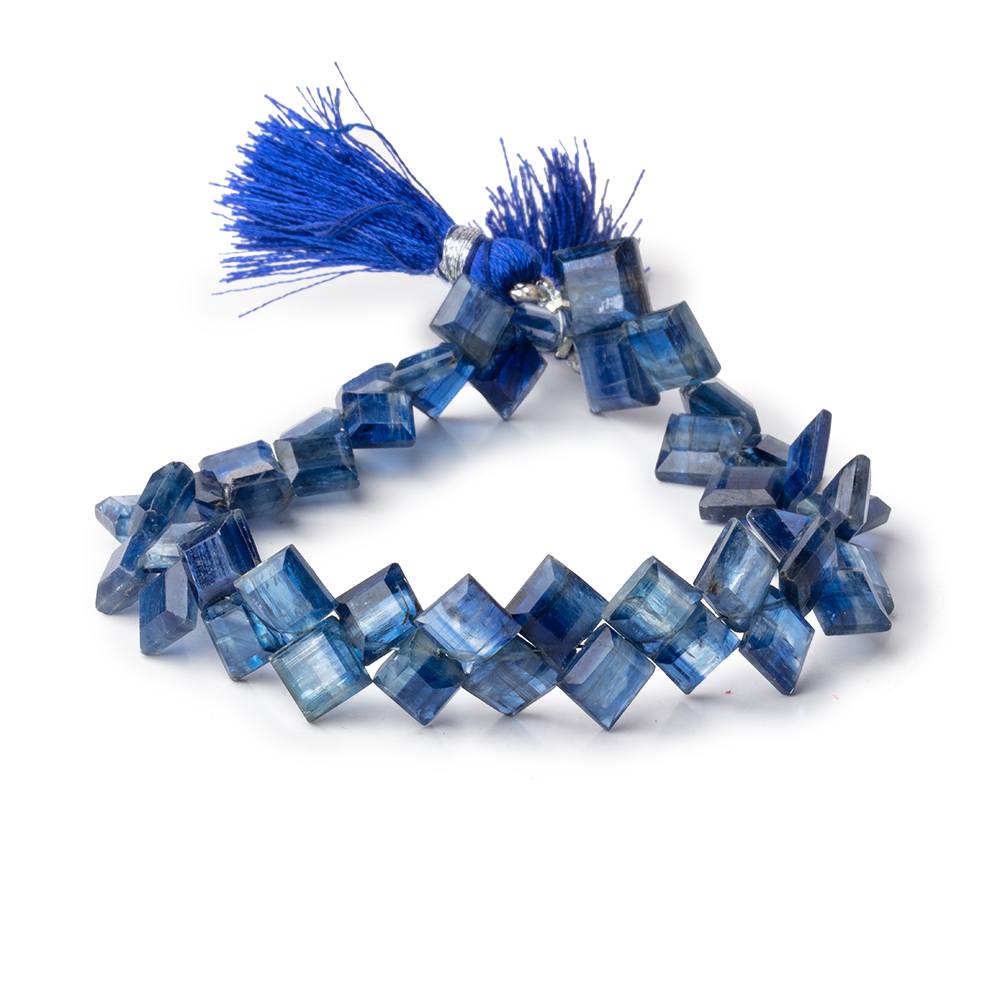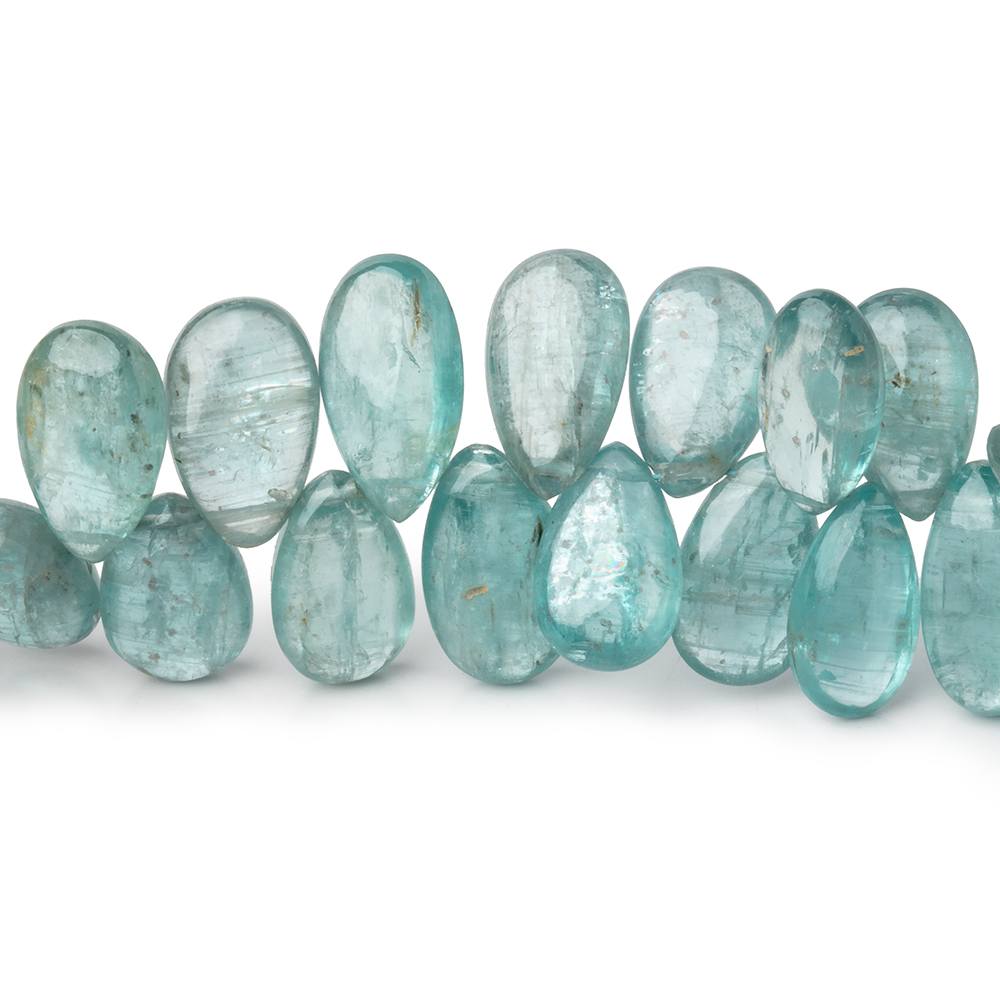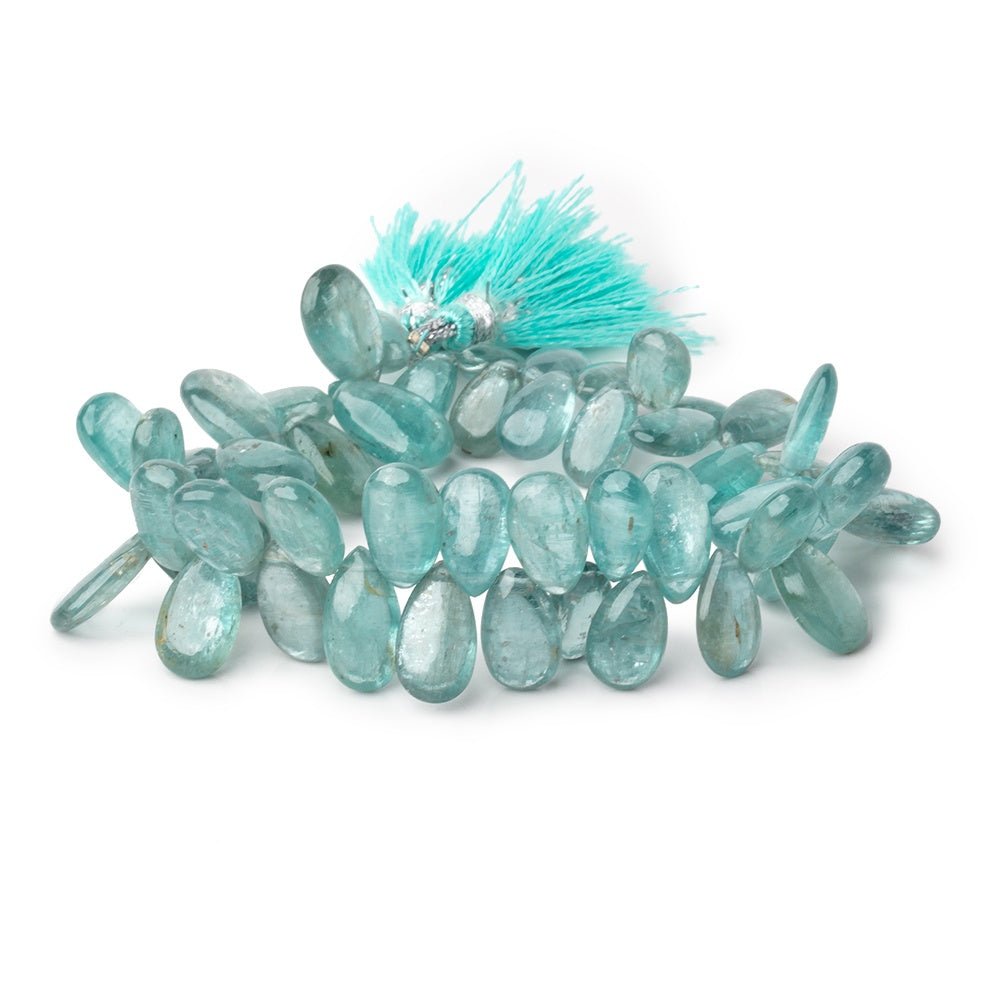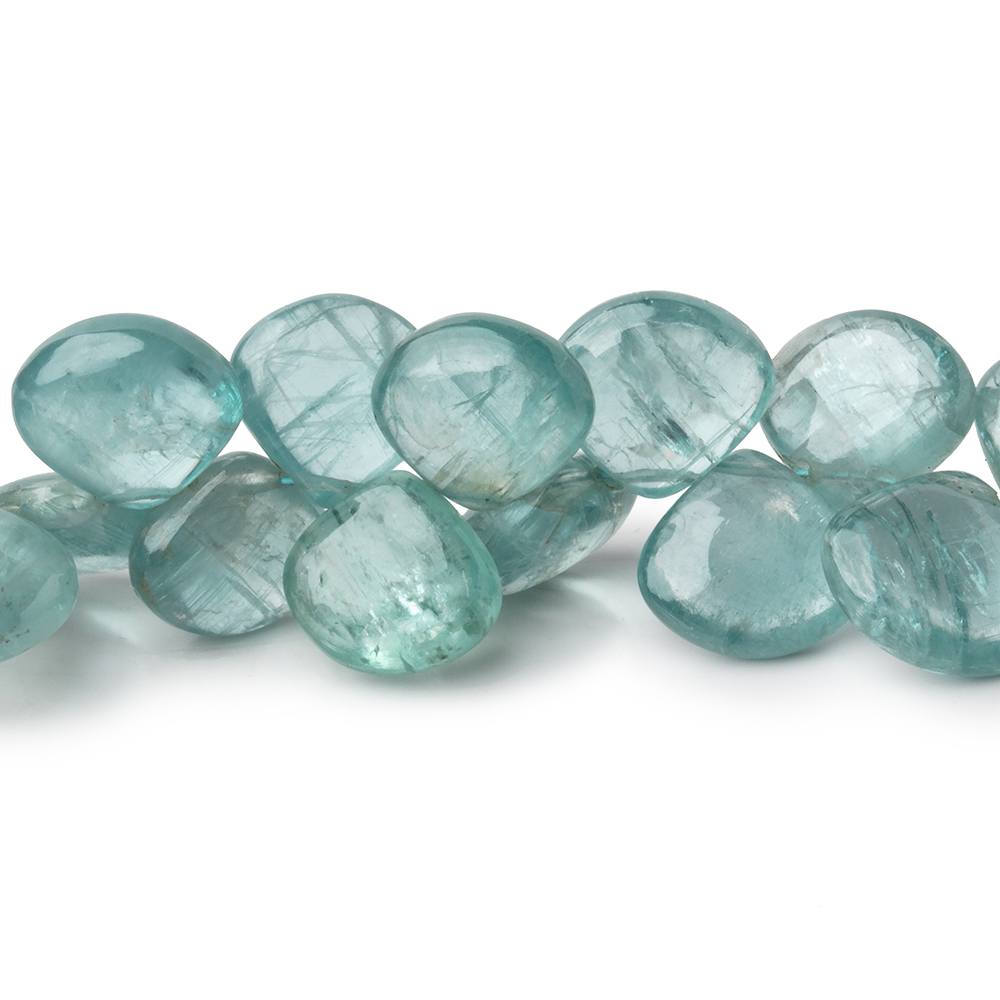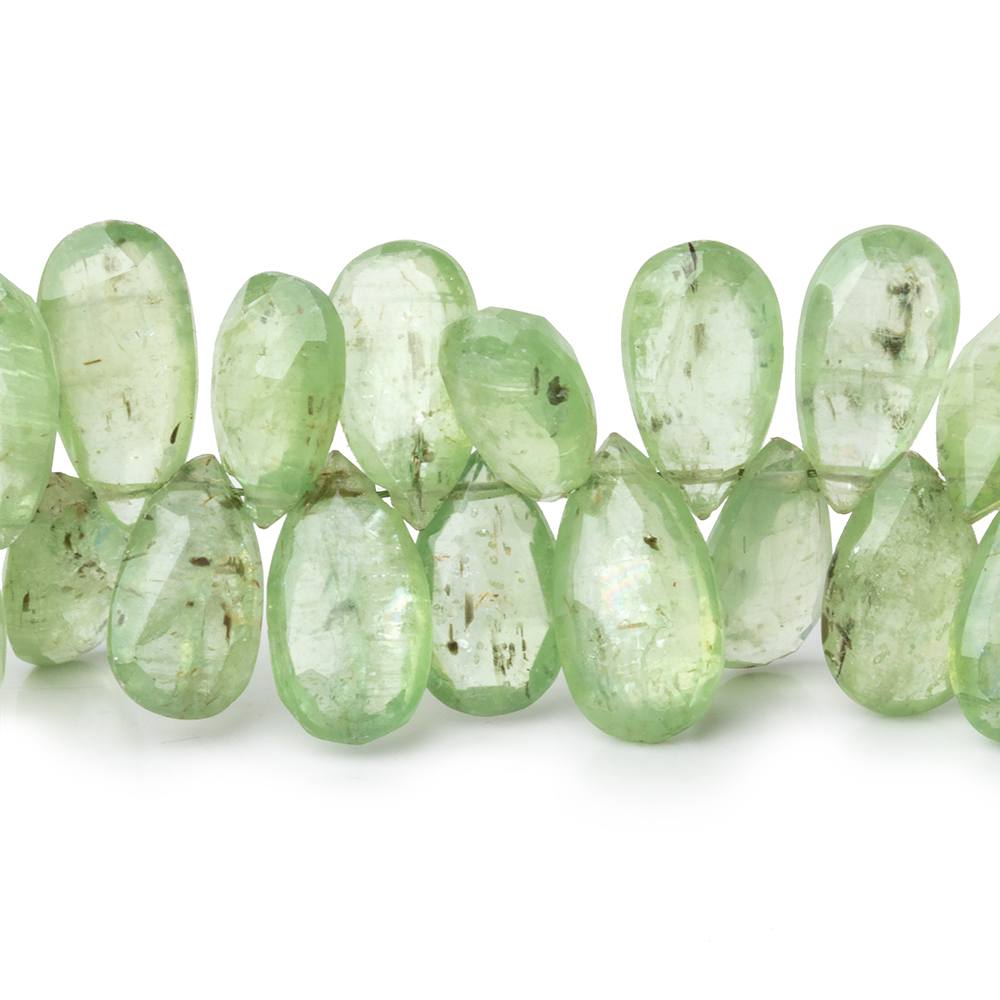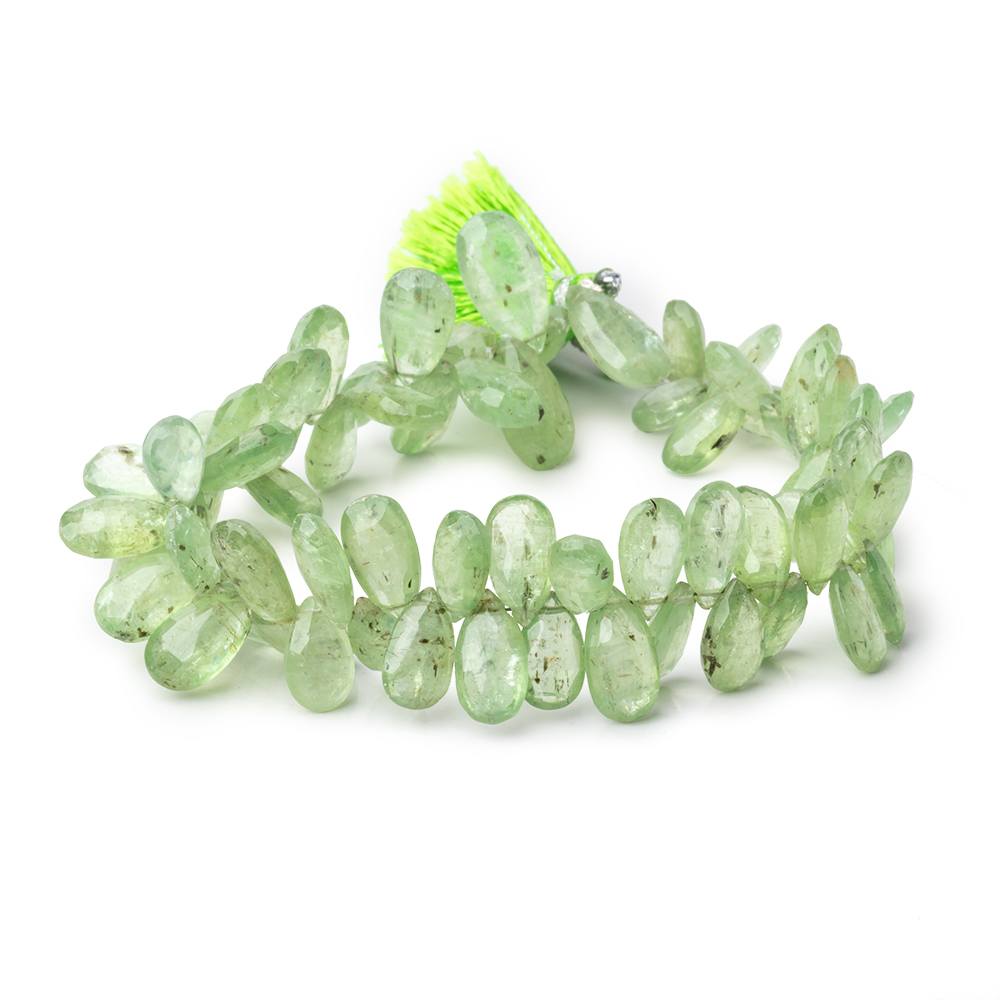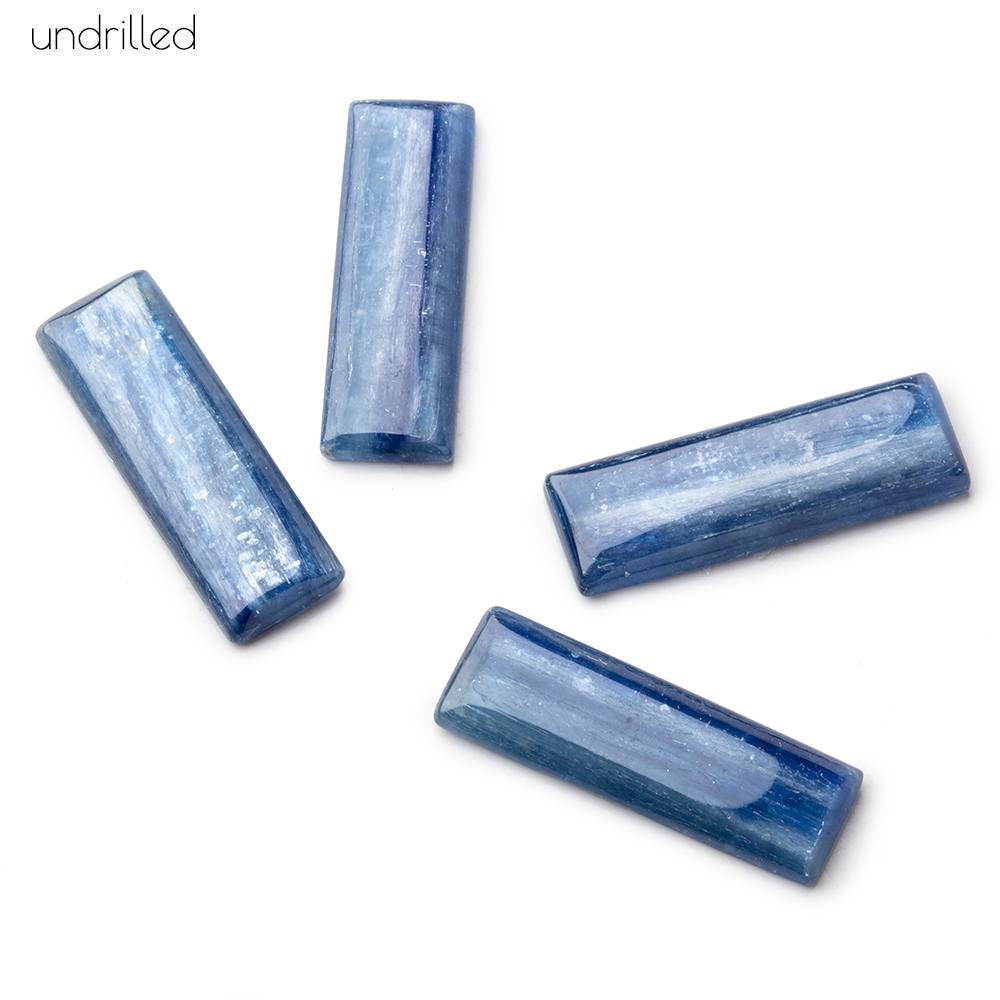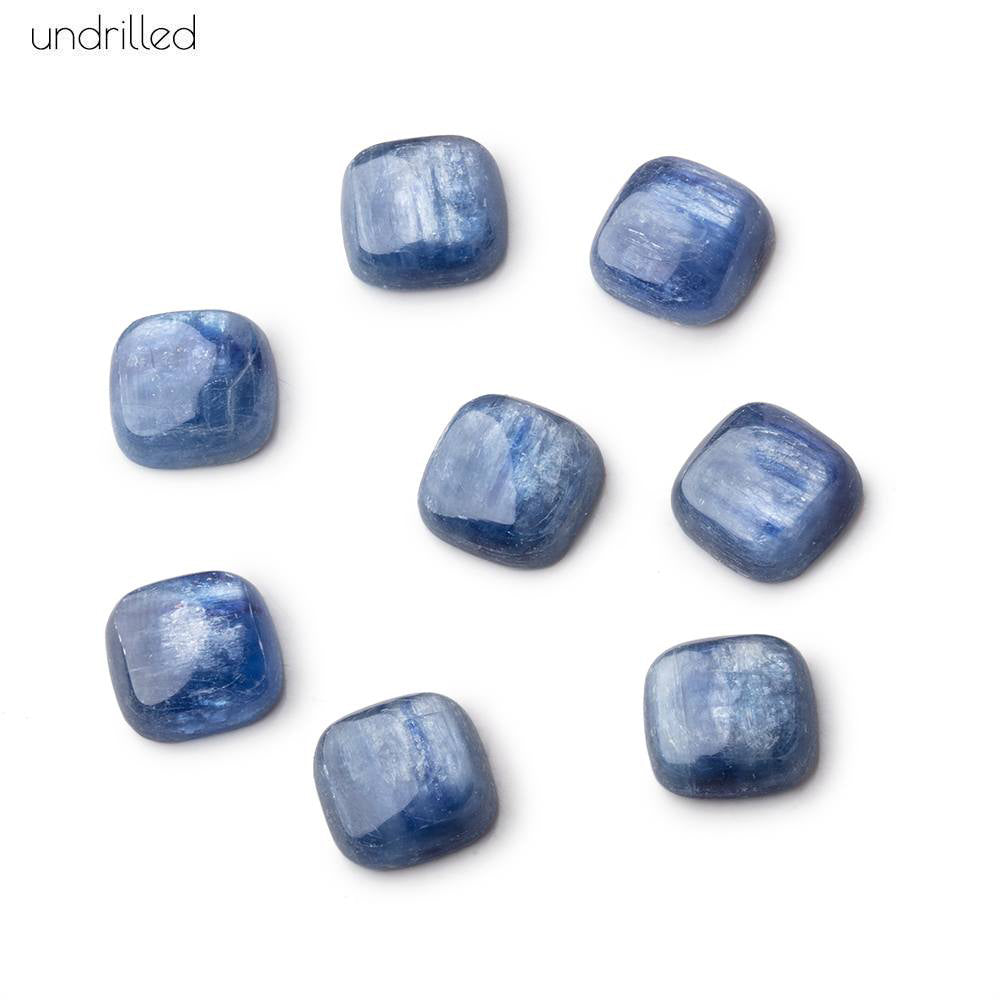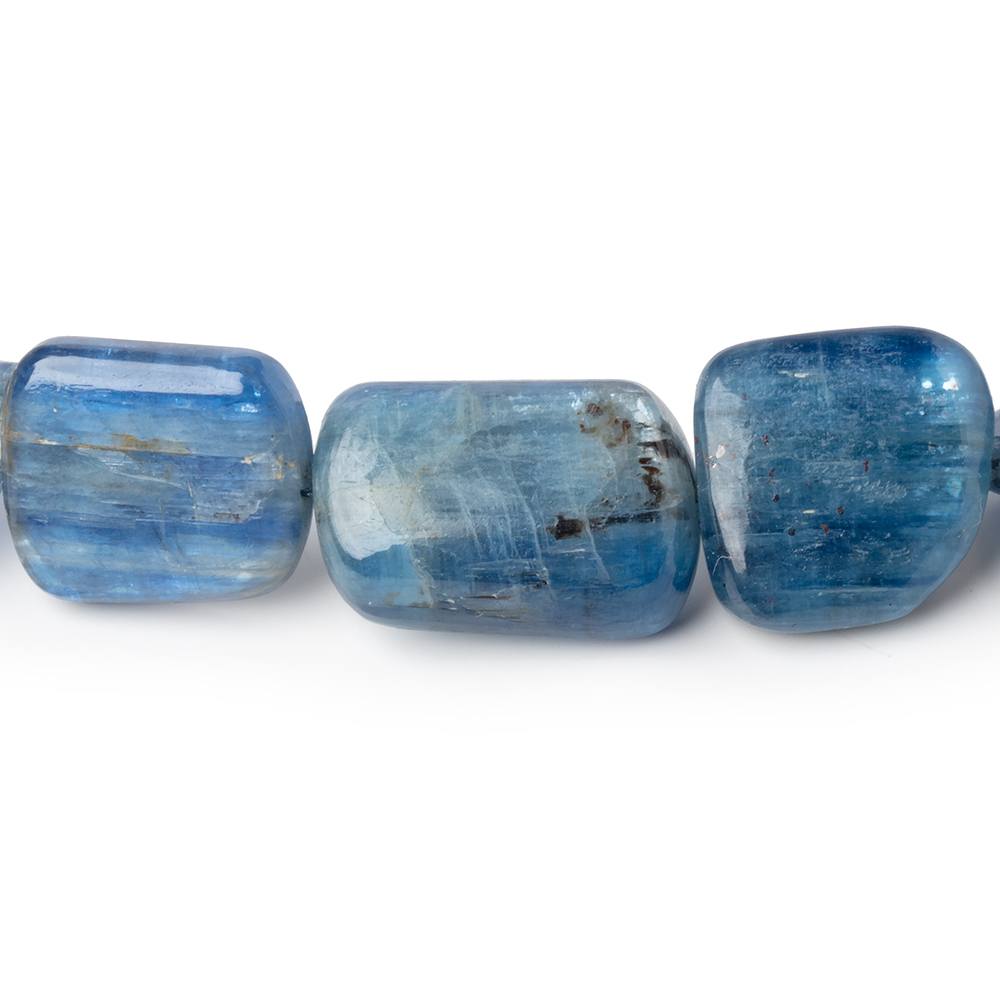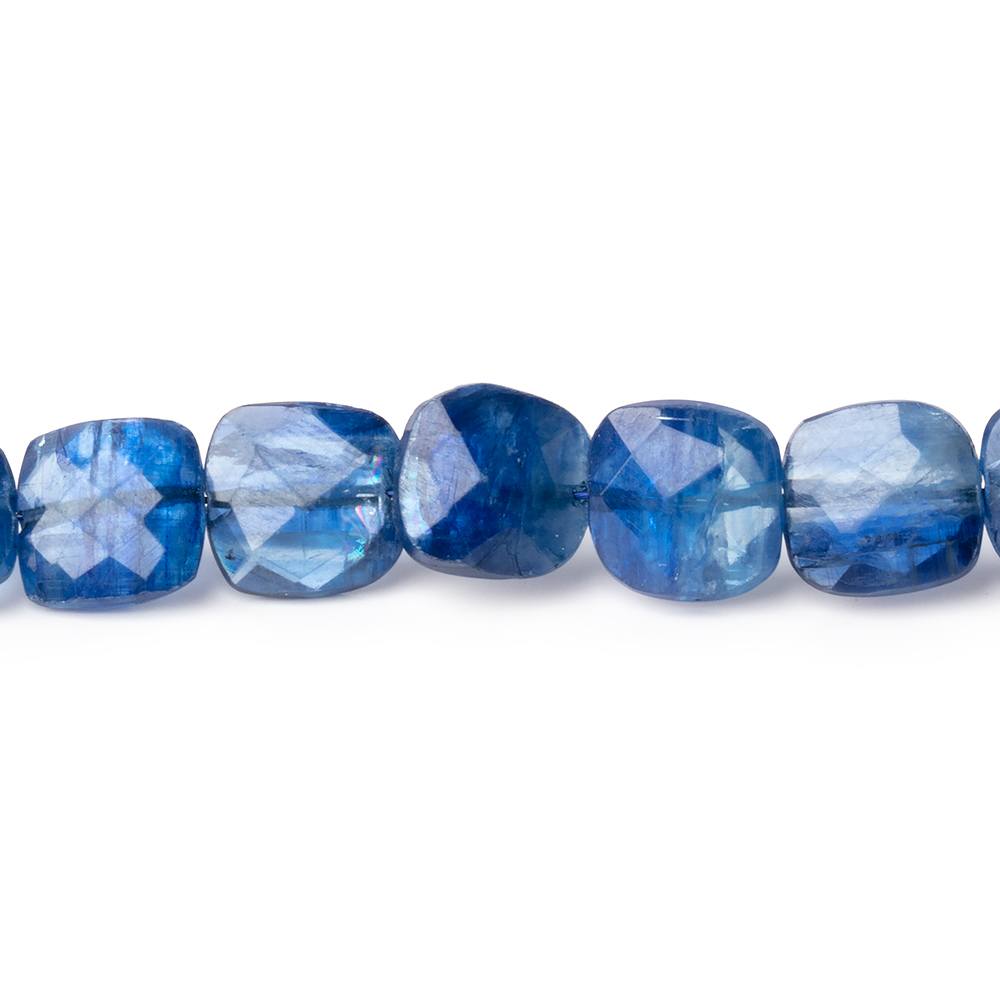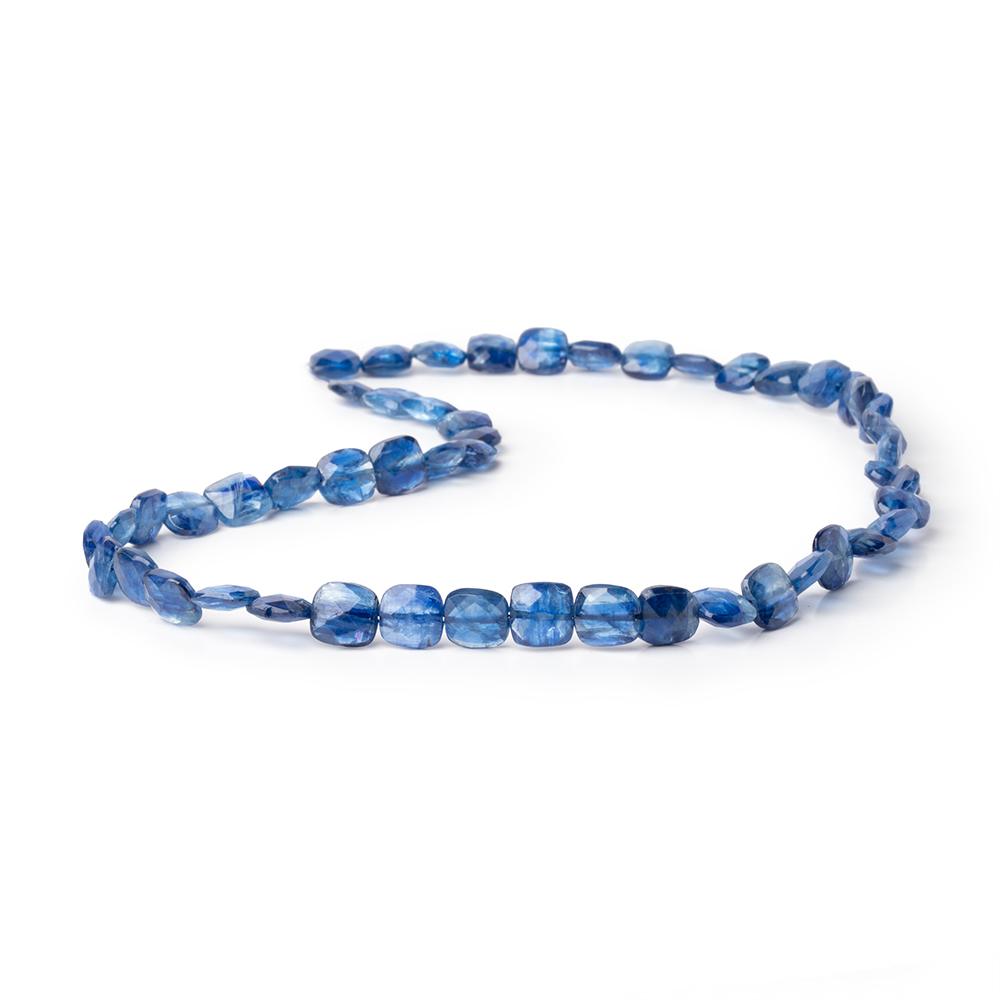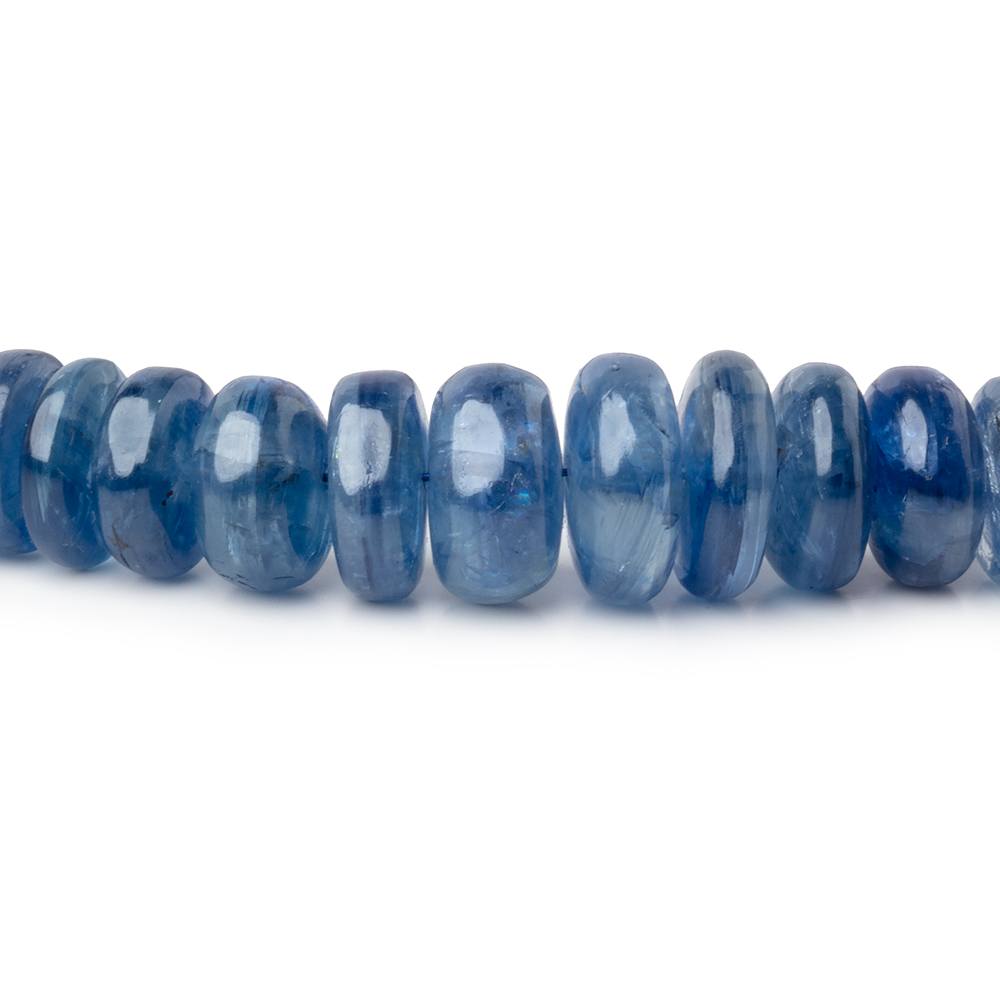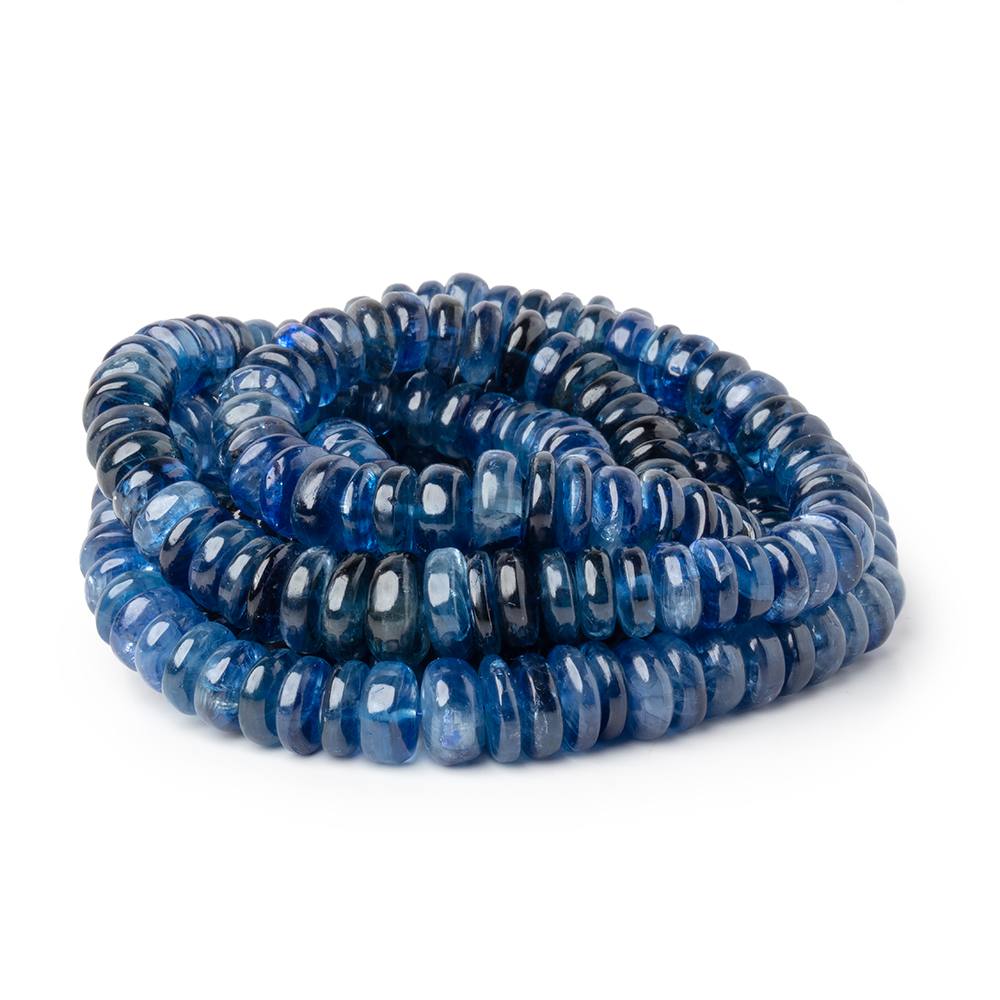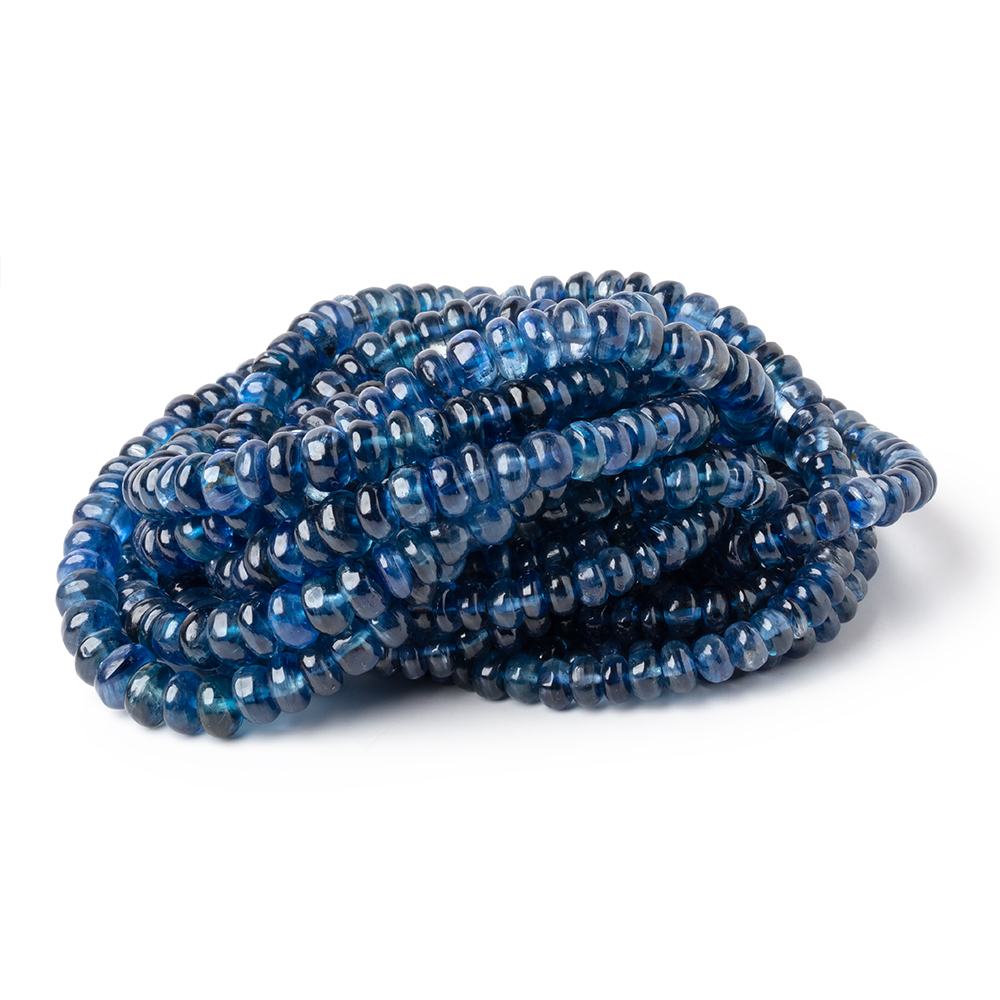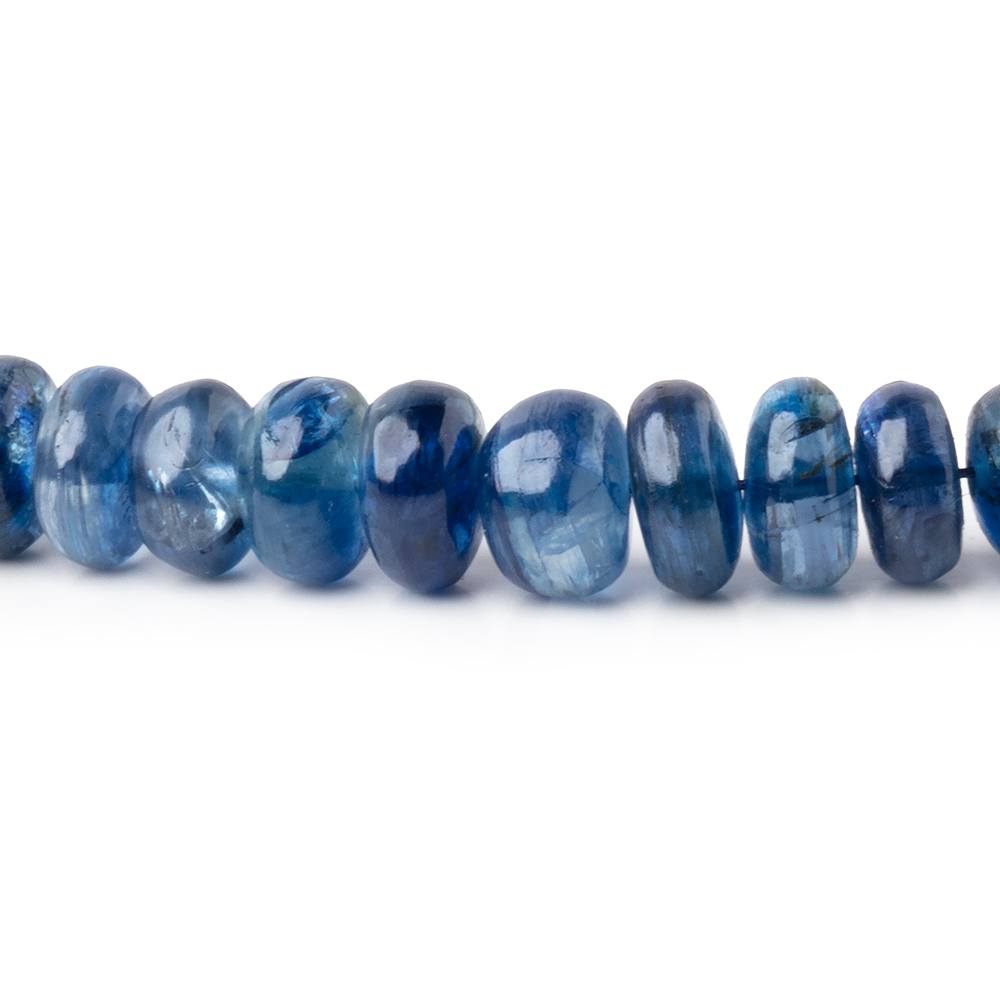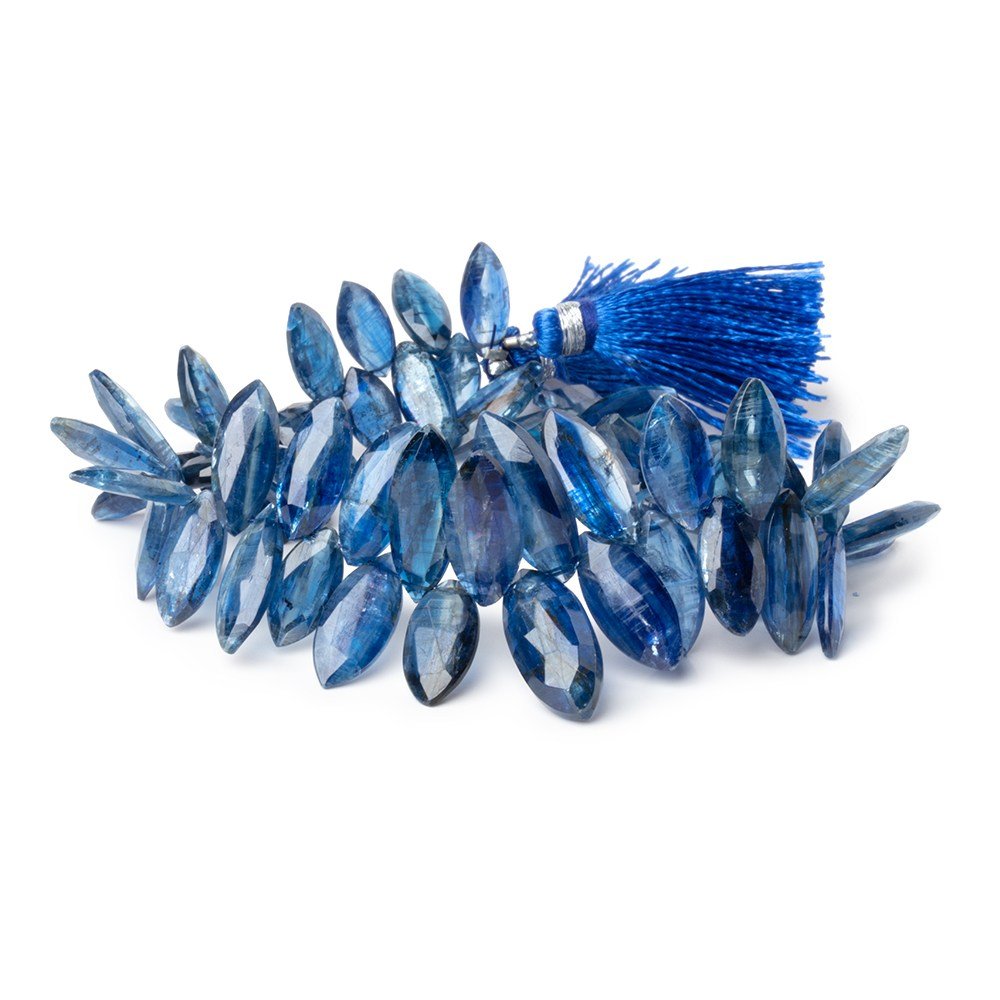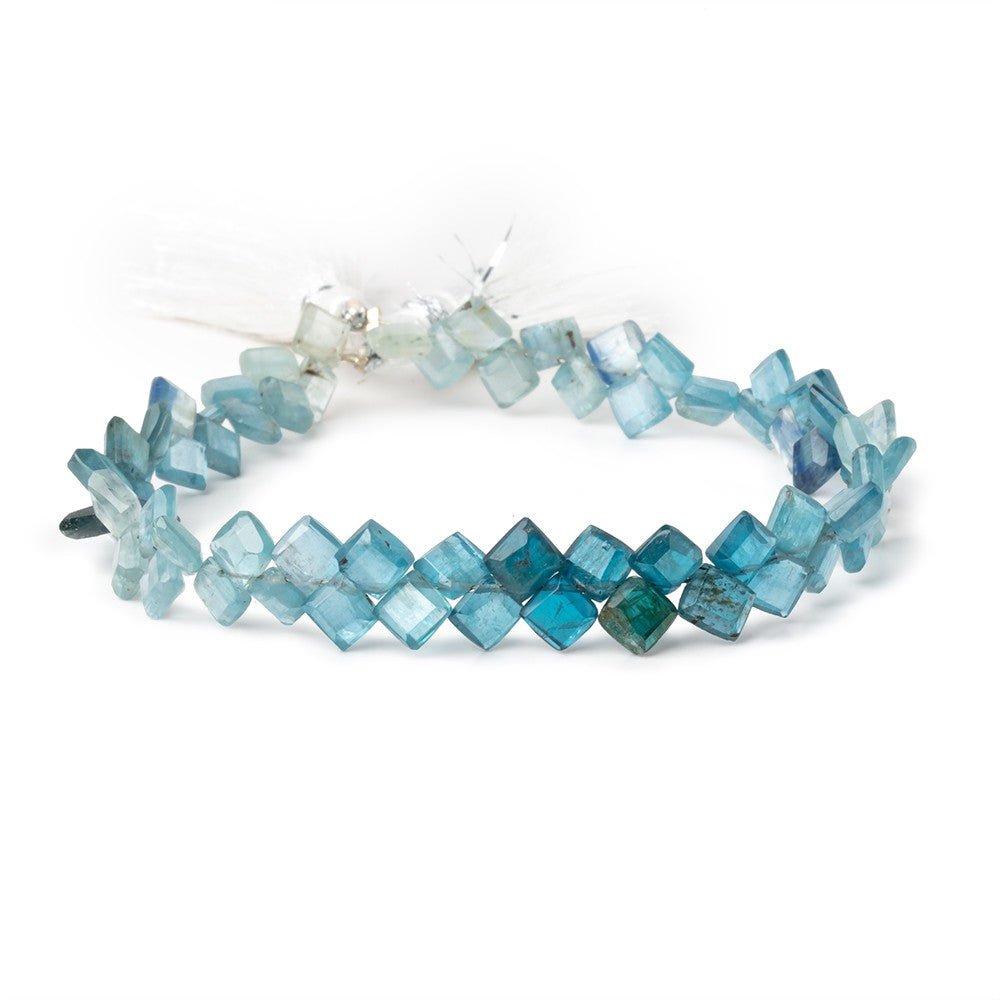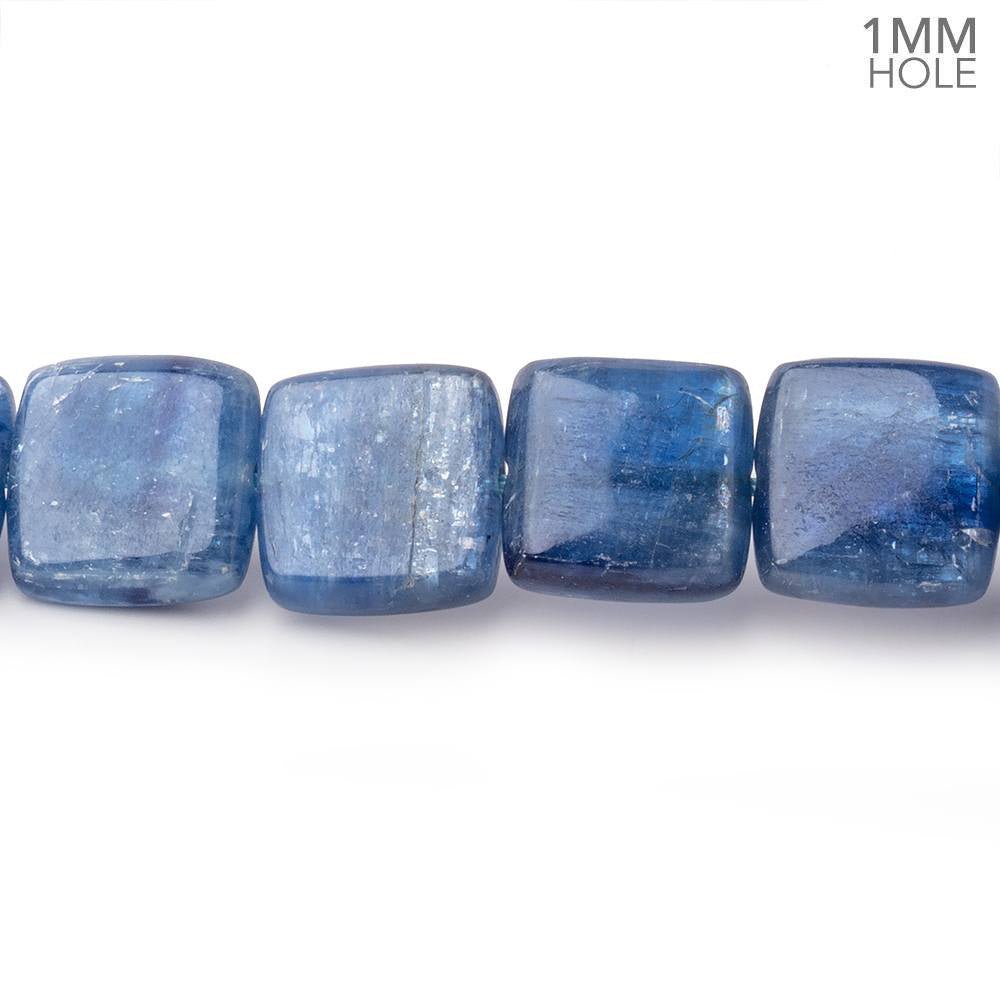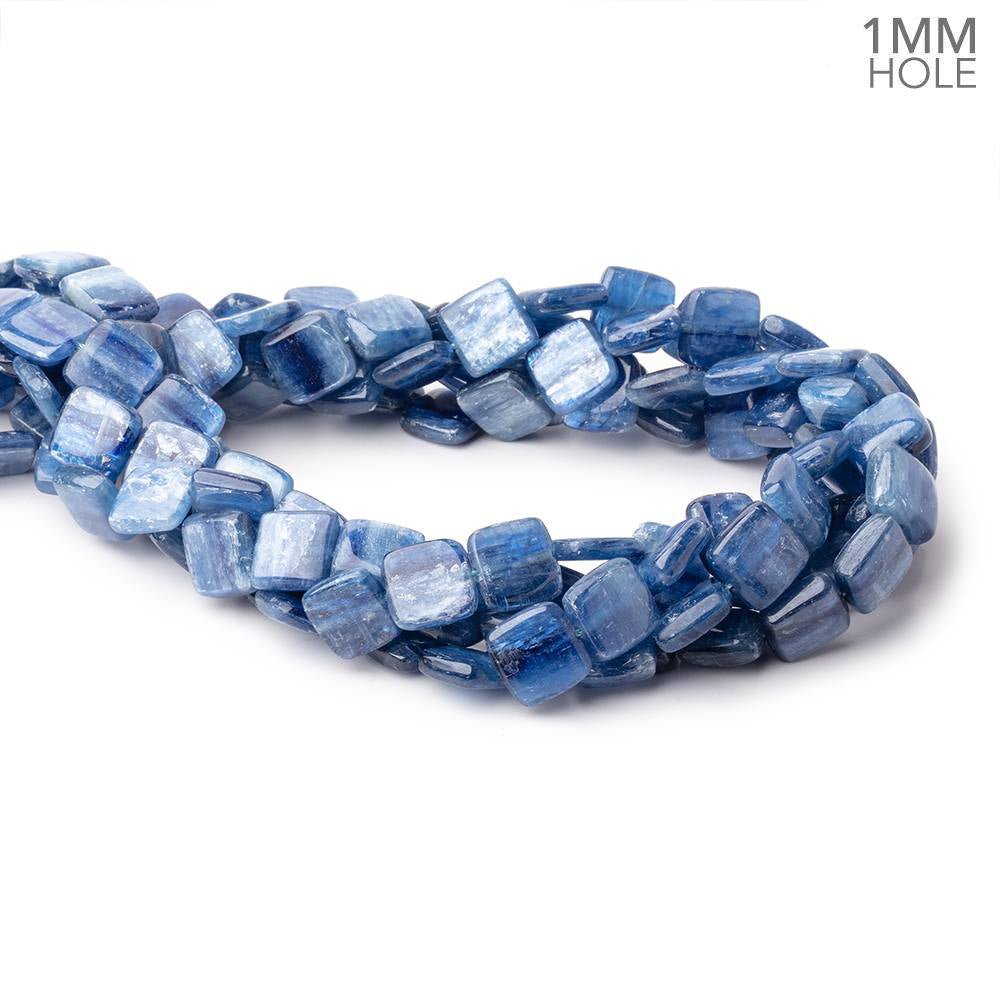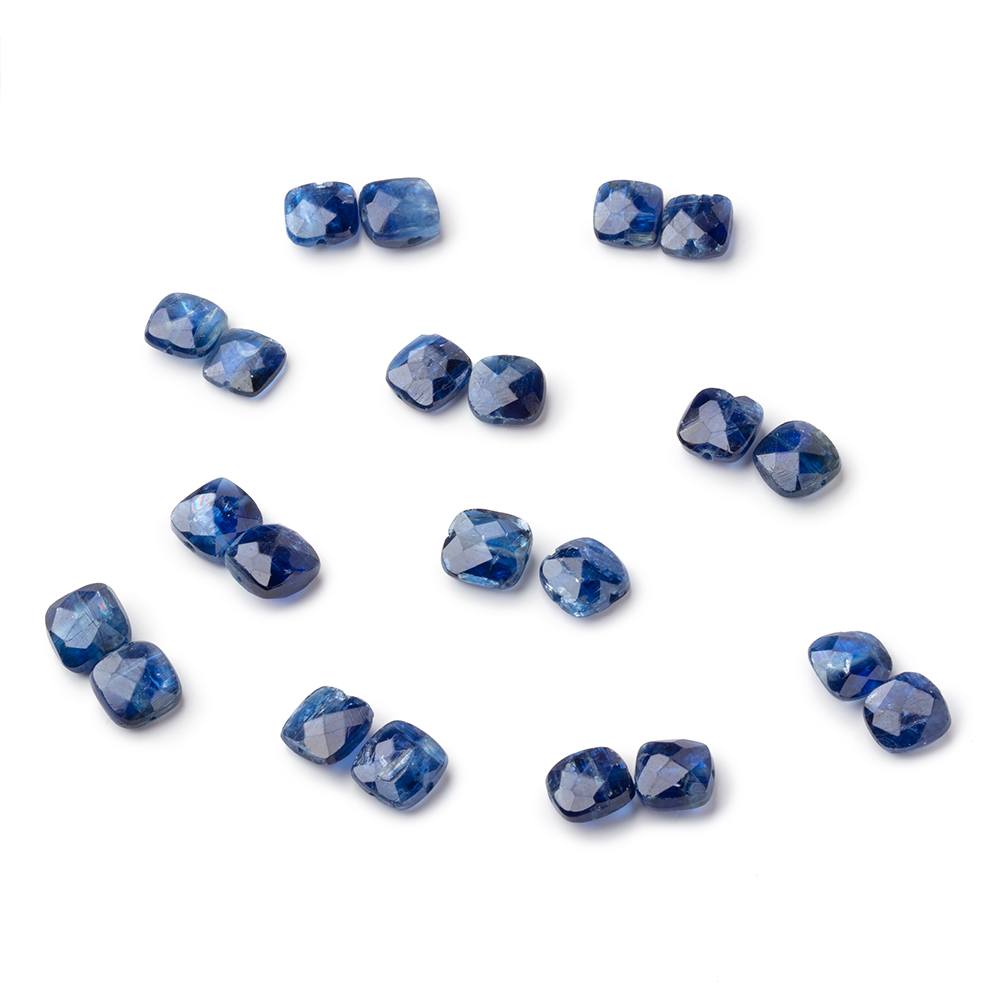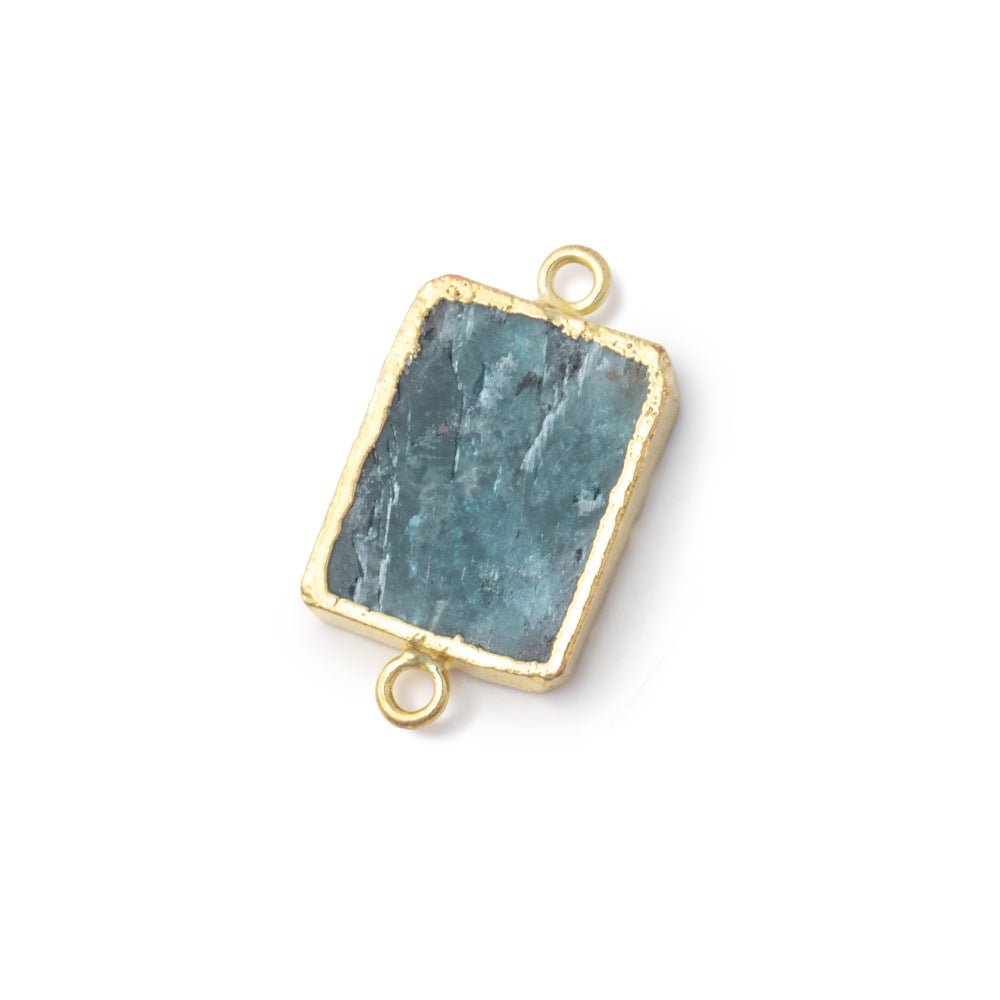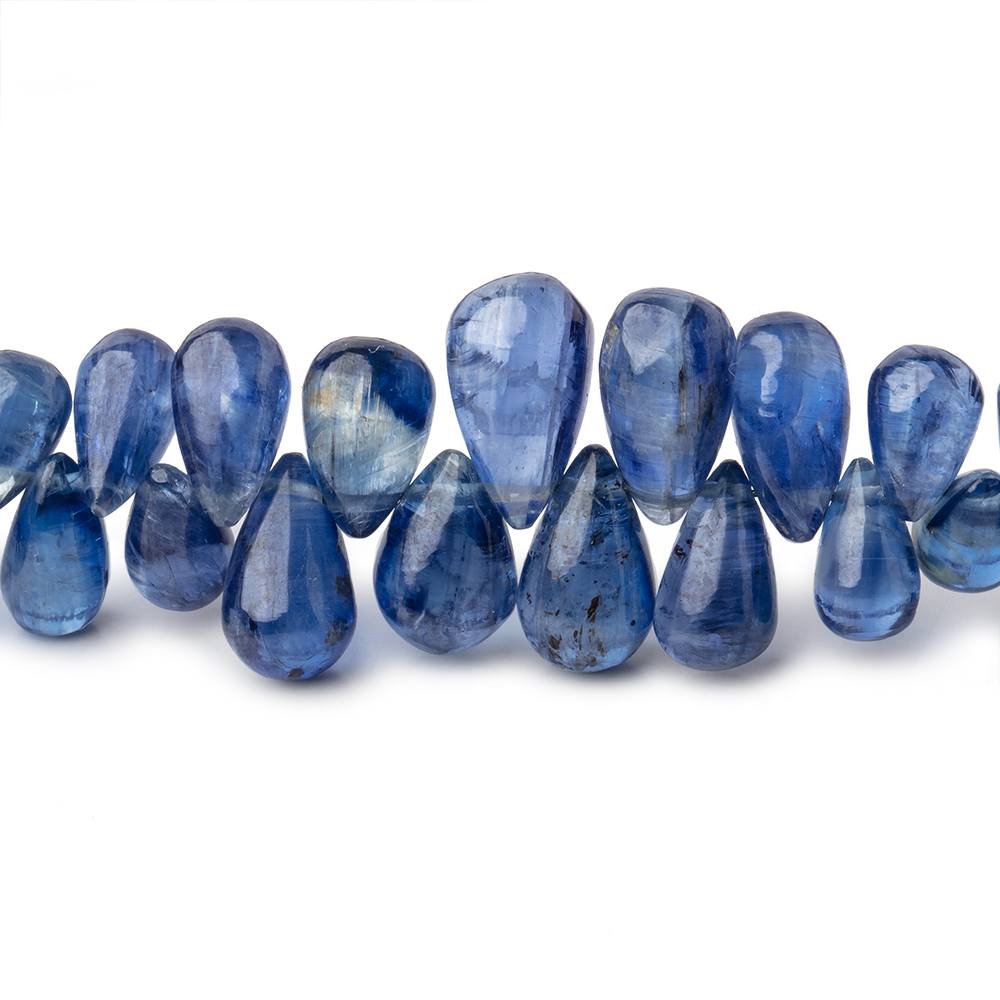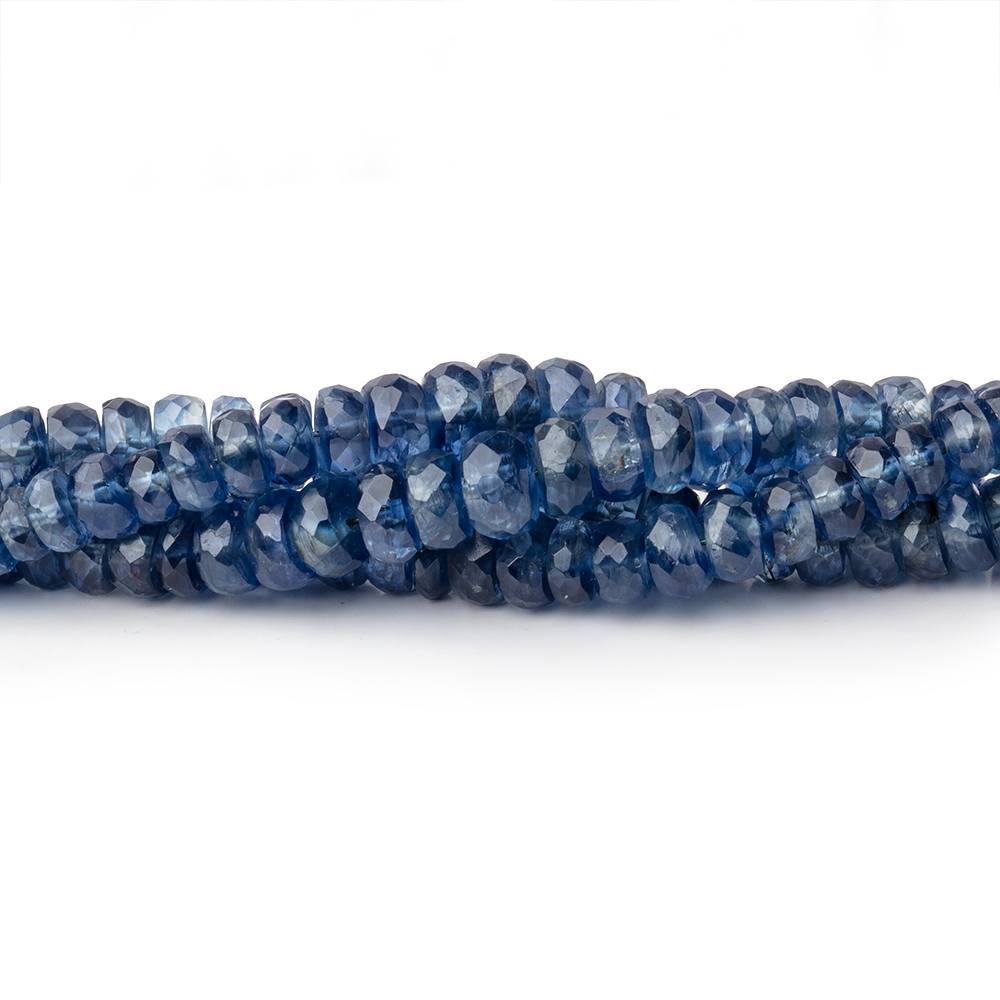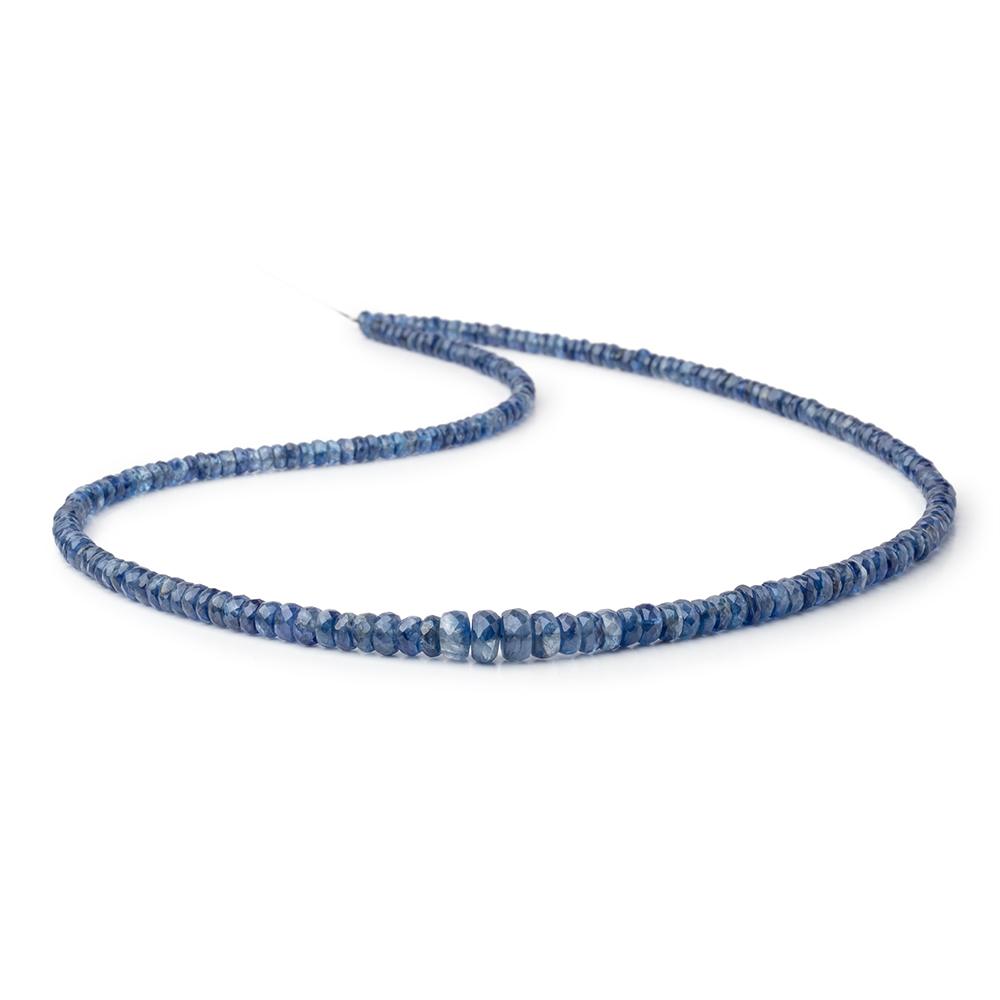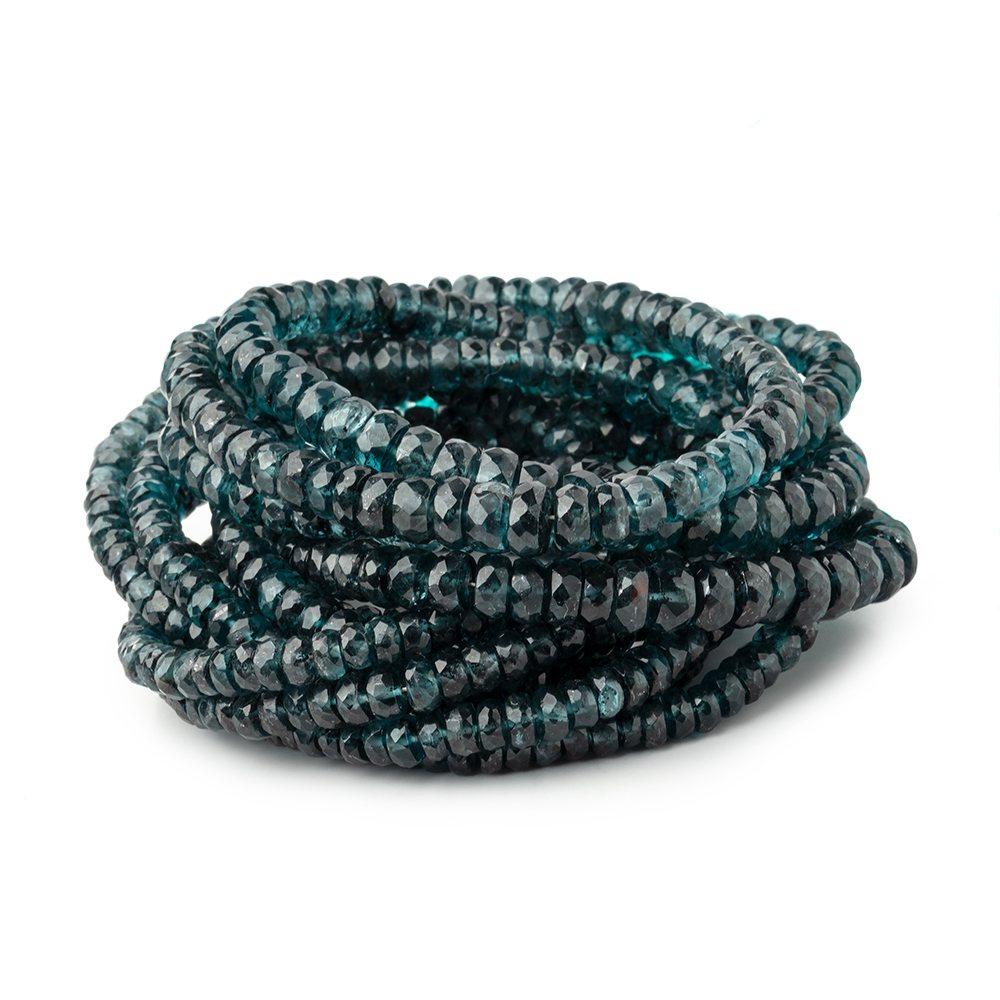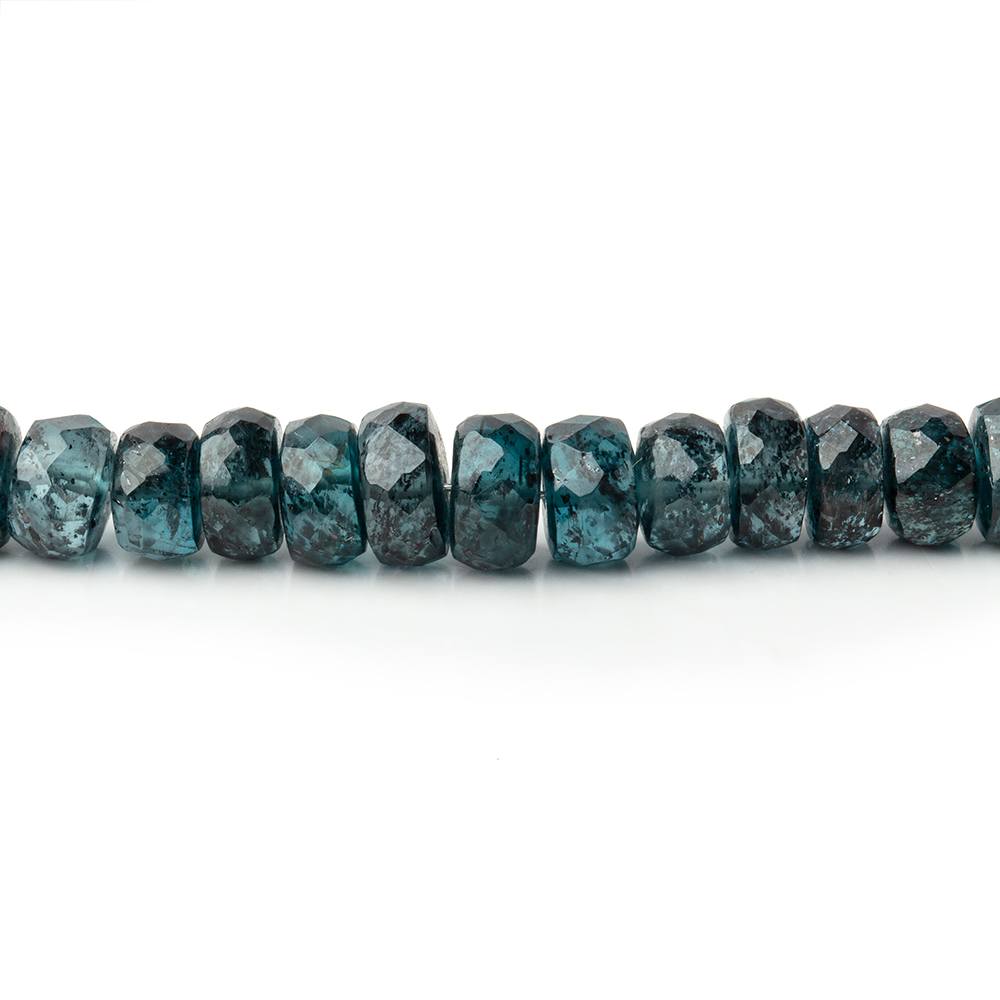Kyanite Beads
Explore our Kyanite Beads and give your jewelry designs a luminous, high-vibe upgrade that your customers and loved ones will notice instantly. At Beads of Cambay, our Kyanite Beads offer a rich palette of blues and soothing greens that not only look stunning in bracelets, necklaces, and earrings but are also often chosen for their calming, balancing energy and support for clear communication. When you shop these beads, you get beautiful, versatile strands that help your creativity flow while aligning with your intention-focused, crystal-loving lifestyle.
What Are Kyanite Beads?
Kyanite beads are gemstone beads cut from the mineral kyanite, an aluminum silicate crystal known for its striking color zoning, glassy luster, and unique property of having different hardness in different directions. Traditionally associated with rich blue tones, kyanite can also appear in green, black, orange, grey, and other hues, offering a versatile palette for beaded jewelry.
Gem-quality kyanite is typically found in high-pressure metamorphic rocks, and lapidaries shape and polish these crystals into rondelles, ovals, nuggets, and faceted beads suitable for necklaces, bracelets, and earrings. Because kyanite naturally exhibits shimmering color streaks and pleochroism (color shifts with viewing angle), kyanite beads often display a dynamic, multi-dimensional appearance on the strand.
Designers value kyanite beads for creating elegant, soothing color stories, especially in blue and teal palettes that pair beautifully with silver, white metals, and freshwater pearls. Healers and spiritual users are drawn to kyanite beads for their association with chakra alignment, inner balance, and calm communication, making them popular in mala-style bracelets, meditation strands, and intention jewelry.
Types of Kyanite Beads
Kyanite occurs in several distinct color varieties, each associated with different energetic themes and design applications. In bead form, these varieties may be offered as smooth, faceted, micro-faceted, or raw-textured strands to suit different aesthetics.
Common types of kyanite beads include:
-
Blue kyanite beads: The most popular variety, ranging from pale icy blue to deep royal blue; often linked to the throat chakra and clear communication.
-
Green kyanite beads: Typically softer, heart-centered tones believed to support emotional balance and compassion; ideal for soothing, nature-inspired jewelry.
-
Black kyanite beads: Usually cut from fan-shaped or blade-like crystals with a dark, metallic, or matte finish; associated with grounding, protection, and energetic clearing.
-
Orange kyanite beads: Among the rarest forms, showing vivid orange hues connected to creativity, motivation, and the sacral chakra.
-
Teal/indicolite kyanite beads: Blue‑green stones that blend throat and heart energies, often used for pieces centered on honest, heart-led communication.
In addition to color, buyers can choose between translucent, gemmy grades and more opaque, rustic materials, depending on their budget and design needs. High-clarity, well-matched faceted kyanite beads typically command higher prices and are ideal for fine jewelry, while more included or irregular beads are perfect for organic and boho designs.
Benefits and Healing Properties of Kyanite Beads
In crystal healing traditions, kyanite is known as a stone of alignment, harmony, and energetic flow, making kyanite beads a popular choice for wearable energy tools. Many practitioners believe that simply wearing a kyanite bracelet or necklace helps to gently balance the aura and support a more centered, calm state of mind.
Across metaphysical sources, the healing themes of kyanite often include:
-
Chakra alignment and energy balance: Kyanite is frequently described as helping to align all chakras and create a free flow of energy through the body’s subtle systems.
-
Enhanced communication: Especially in its blue form, kyanite is said to support clear self-expression, truthful speech, and confident communication in personal and professional settings.
-
Emotional soothing: Many users turn to kyanite for relief from stress, frustration, and emotional turbulence, using it as a calming companion during times of challenge.
-
Spiritual growth and intuition: Kyanite is associated with higher awareness, meditation, and intuitive insight, making it a favorite for those deepening their spiritual practice.
Some practitioners also associate kyanite with physical support, particularly for the throat, vocal cords, and nervous system, although such uses are complementary and not a substitute for medical care. Because it is considered a high-vibration yet gentle stone, kyanite beads are often recommended for energy workers, empaths, teachers, public speakers, and anyone who needs both clarity and calm.
What Is the Meaning of Kyanite?
The name “kyanite” comes from the Greek word “kyanos” or “kuanos,” meaning “deep blue,” reflecting the gemstone’s classic color and long-standing association with serene waters and clear skies. Symbolically, modern crystal literature often links kyanite with tranquility, honesty, and alignment, presenting it as a stone that helps people live more in tune with their authentic selves.
On a metaphysical level, kyanite is widely described as a stone of balance and harmony that bridges the mind, emotions, and spirit. It is often said to promote perspective, helping wearers step back from chaos, see the bigger picture, and make decisions from a place of clarity rather than reactivity.
Many guides note that kyanite is associated with the throat and third-eye chakras, reinforcing themes of truthful communication and intuitive understanding. In astrology-focused sources, kyanite is sometimes recommended for signs such as Aries, Libra, and Taurus, where it is believed to soften conflict, encourage fairness, and support balanced self-expression.
What Is Kyanite Good For?
For everyday wearers, kyanite beads are considered particularly beneficial for situations that require calm communication, balanced emotions, and mental clarity. People often choose kyanite jewelry for work environments, meaningful conversations, or creative projects where they want to stay centered and articulate.
Common intentions for using kyanite beads include:
-
Communication and self-expression: Blue kyanite is popular with speakers, teachers, singers, and anyone who wants to express themselves more clearly and confidently.
-
Stress relief and emotional balance: Kyanite is often used as a soothing stone to alleviate anxiety, overwhelm, or emotional transitions, thanks to its reputation for calming turbulent emotions.
-
Meditation and spiritual practice: Many meditators keep kyanite beads nearby or use kyanite malas to deepen focus, support chakra work, and access intuitive guidance.
-
Energetic protection and cleansing: Black and blue kyanite are both described as supportive for clearing stagnant or negative energies, making them useful companions for healers and empaths.
Some sources highlight that kyanite is considered “self-cleansing” in energetic terms, meaning it is thought not to hold negative energy in the same way as many other crystals. Because of this, kyanite bead jewelry is often recommended as a low-maintenance energy piece that can be worn consistently without intensive cleansing rituals.
Why Is Blue Kyanite So Expensive?
Blue kyanite’s price reflects a combination of rarity in fine quality, challenging cutting properties, and growing demand from both jewelry and metaphysical markets. While lower-grade material can be relatively affordable, highly saturated, well-matched blue kyanite beads with good clarity and minimal fractures are far less common and command premium prices.
From a gemological perspective, kyanite is anisotropic, meaning its hardness varies depending on the crystal direction, which makes cutting and polishing more complex and labor-intensive. This difficulty increases wastage and the skill required to produce clean, symmetrical beads, which is reflected in their final cost.
Market reports indicate that blue kyanite pieces can range from low-cost tumbled stones to higher-end gems priced anywhere from a few dollars to around the low hundreds per piece, depending on size and quality. In bead form, factors such as consistent color, precision faceting, and matching along the strand drive prices higher, particularly for royal blue or teal tones that rival more traditional gemstones.
Is Kyanite Crystal Rare?
Kyanite as a mineral is not among the rarest crystals globally, but fine-quality gemstone material, especially in vivid, clear blue or unusual colors, is considered relatively scarce and collectible. Large, transparent crystals suitable for faceted gems and high-end beads are far less common than more included or opaque specimens, which narrows the supply for jewelry-grade strands.
Certain varieties, such as bright orange or exceptionally well-balanced teal/blue‑green kyanite, are described as rare and tend to be produced in smaller quantities from select localities. As awareness of kyanite’s metaphysical benefits has grown, demand has increased for both common and rarer colors, which can exert additional pressure on prices and availability.
For buyers, this means kyanite bead strands are accessible at a range of price points. Still, high-quality material, particularly intensely colored, well-cut, and well-matched beads, should be considered a more limited, premium option. When evaluating rarity and value, factors such as origin, treatment-free status, color saturation, clarity, and craftsmanship all play significant roles.
Choosing Kyanite Beads for Your Collection
When selecting kyanite beads, it is beneficial to consider both aesthetic and energetic goals. Choose blue varieties for communication and calm, green for heart healing, black for grounding, and orange or teal for creativity and integrated expression. Pay attention to color matching, luster, bead shape, and strand uniformity to ensure the beads align with your design vision and the level of craftsmanship you desire.
For energy-focused buyers, wearing kyanite beads close to the throat, heart, or wrist is a popular way to keep its harmonizing vibration within your daily field. Combined with mindful intention, kyanite bead jewelry can become both a beautiful adornment and a supportive ally on your journey toward balance, clarity, and authentic self-expression.
Hear what customers are saying about our service and products!
We are rated 4.9 out of 5 stars. 3000+ Five-Star Reviews.





